
The end of summer is my favourite, still sunny and warm with long golden afternoons but also a sniff of cooler air and the promise of sweater weather (which apparently is here now – we actually lit a fire in the fireplace last night!) and apple pie around the corner. The best part is all the glorious late season fruit – raspberries and peaches and plums (late summer is plum cake season, after all) and my very favourite: blackberries. Weekends in late August and early September, you will inevitably find me crouched on the side of the road or in the ditch foraging for blackberries, coming home with scratched forearms and purple-stained fingers and a bucket of shiny black fruit tasting of summer nostalgia.
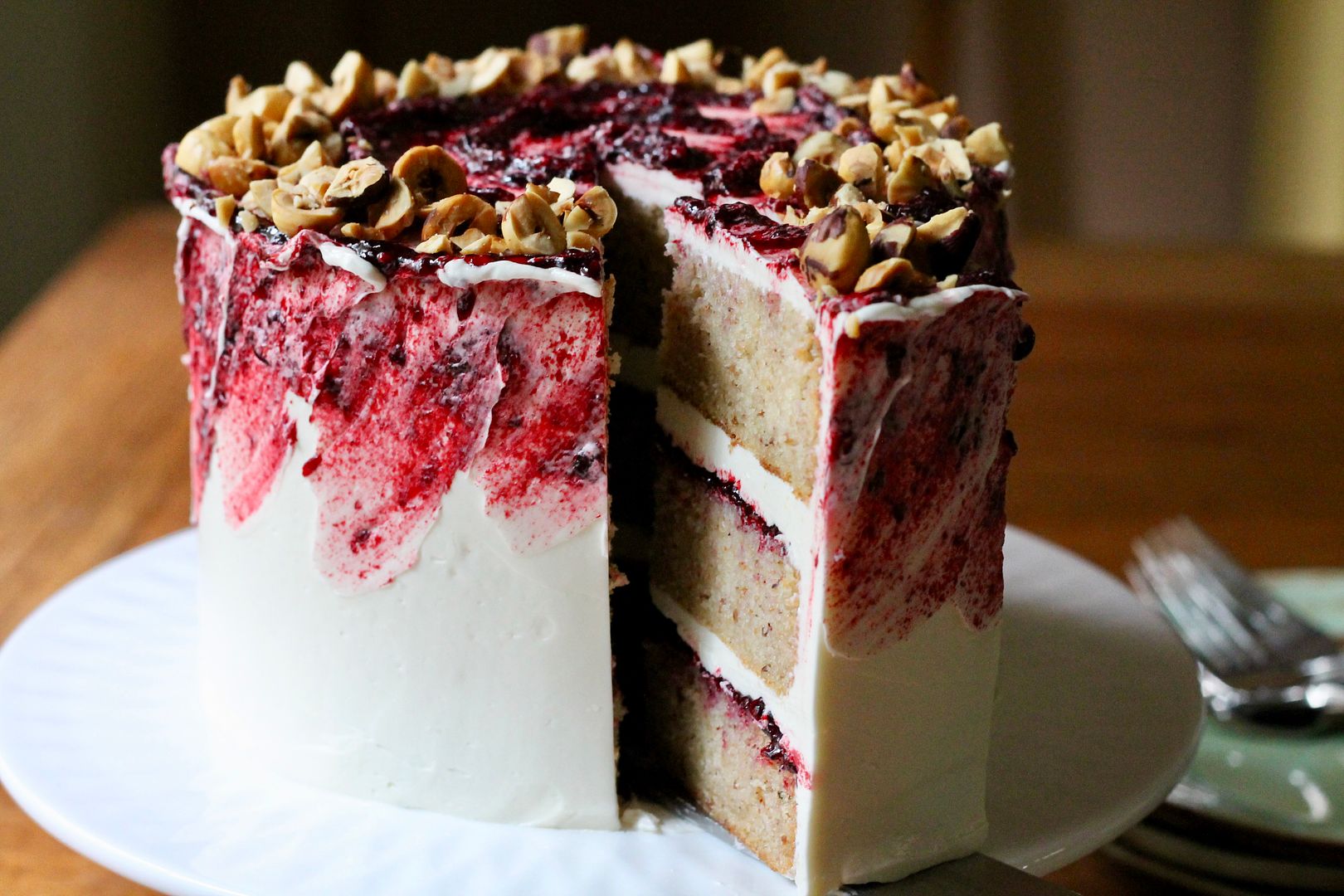
I made this cake for no other reason than I had a free Sunday and I wanted to make something with blackberries, and I thought hazelnut and blackberries would go well together – and as everyone who had a piece of this cake can attest, they really do.
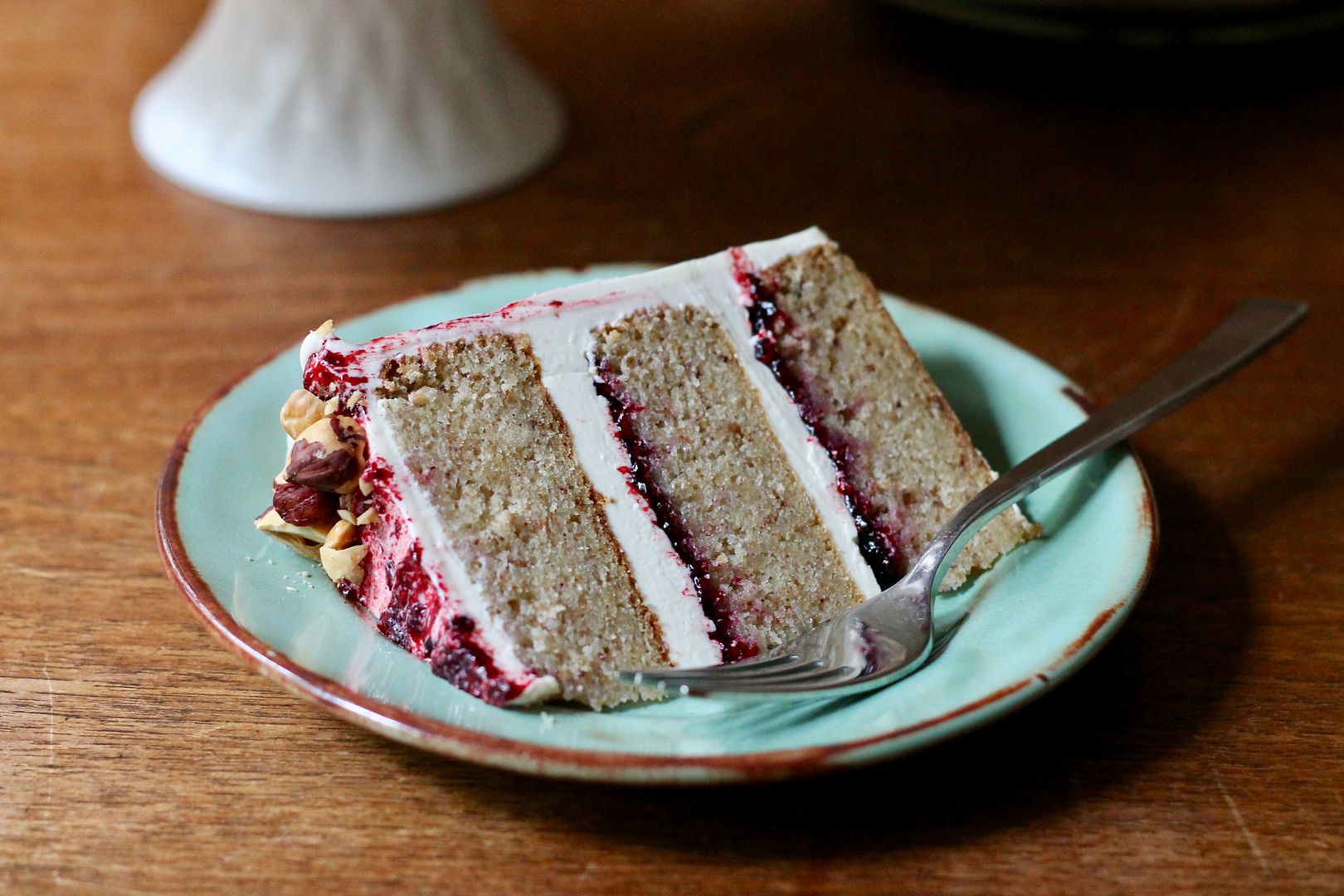
The hazelnut sponge cake is a variation of Bravetart’s white cake recipe, subbing toasted ground hazelnuts for a portion of the flour to give you a richly nutty and moist cake with a surprisingly light texture. I spread blackberry jam between the layers along with the vanilla buttercream that also covers the top and sides of the cake, and tried out a fun ombre-ish decorating technique on the sides.
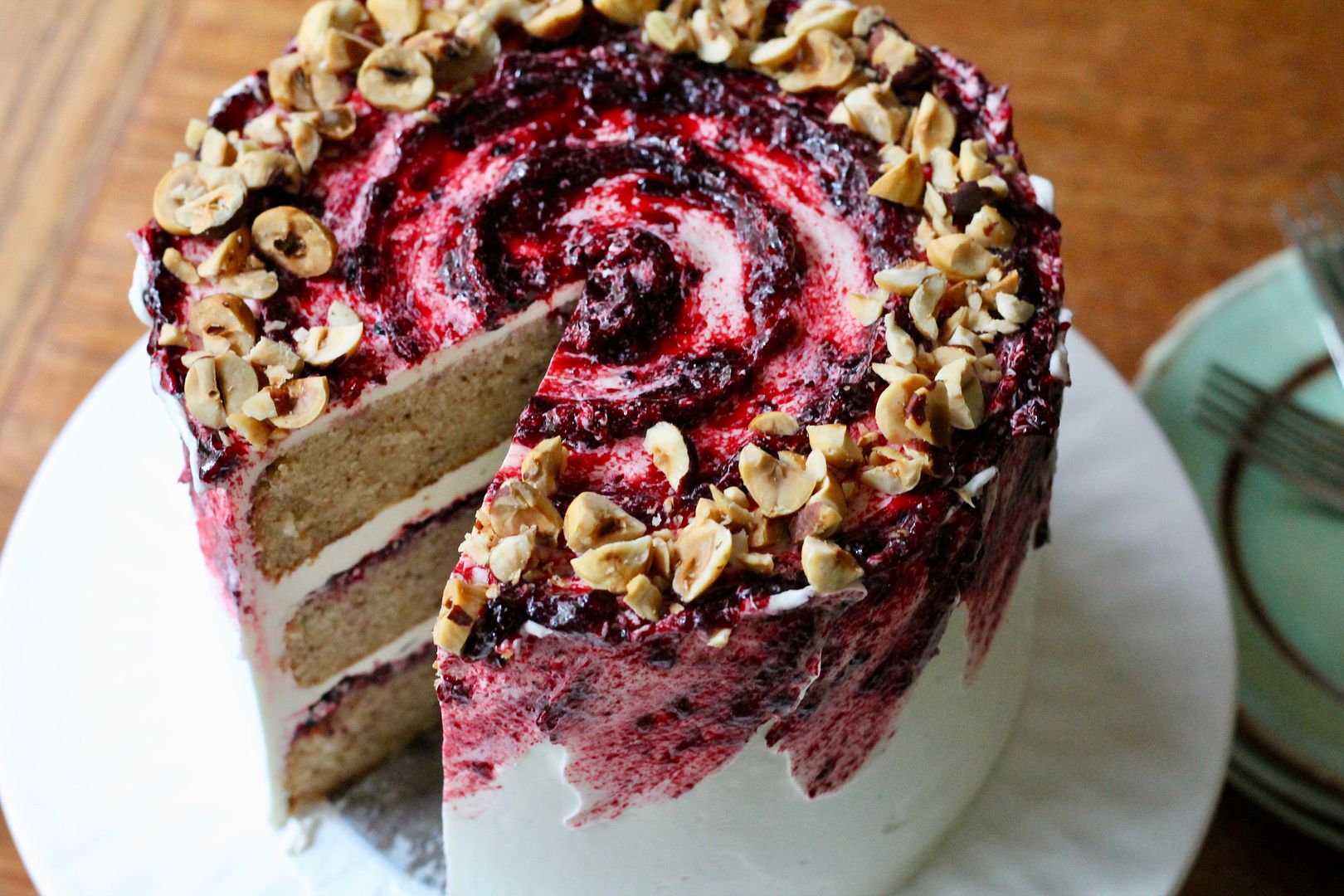
I usually gravitate towards chocolate on chocolate on chocolate when dreaming up a dessert, but this cake reminded me once again how good non-chocolate things can be: rich hazelnuts, bright tangy blackberries, and creamy vanilla buttercream in a perfect celebration of the last days of summer.
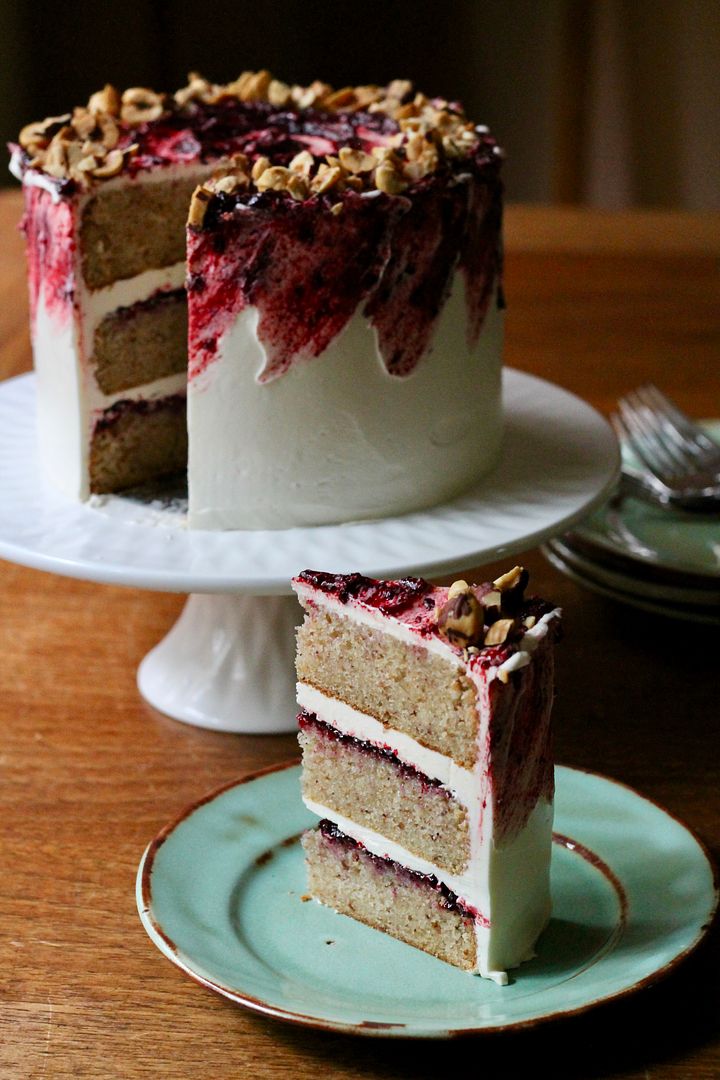
Blackberry Hazelnut Layer Cake
Makes one 6″ round layer cake, 10-12 servings (you can double the recipe to make an 8″ round layer cake). Click here for a printable PDF of the recipe.
Hazelnut Sponge Cake
Adapted slightly from Bravetart. Makes 3 x 6″ cake layers.
Place 5 ½ oz hazelnuts on a baking tray and toast in a 350˚F (325˚F) convection oven for about 10 minutes, until golden and fragrant. Allow them to cool completely, then rub them in a towel to remove the skins. Reserve 1 oz of the hazelnuts for decorating the cake.
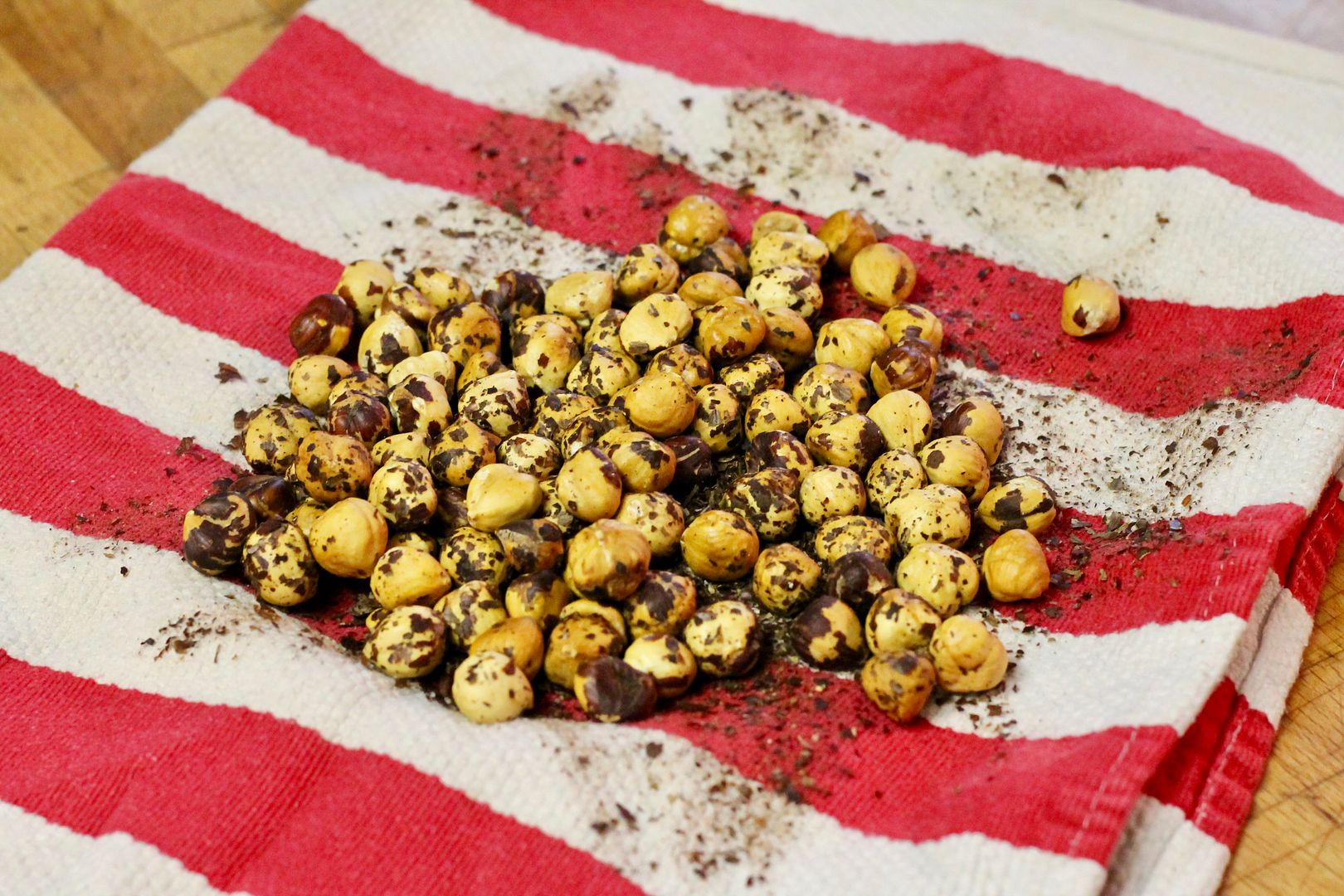
Meanwhile, turn the oven down to 325˚F (300˚F convection) and position a rack in the lower third. Line the bottoms of three 6″ cake pans with parchment paper and grease the sides.
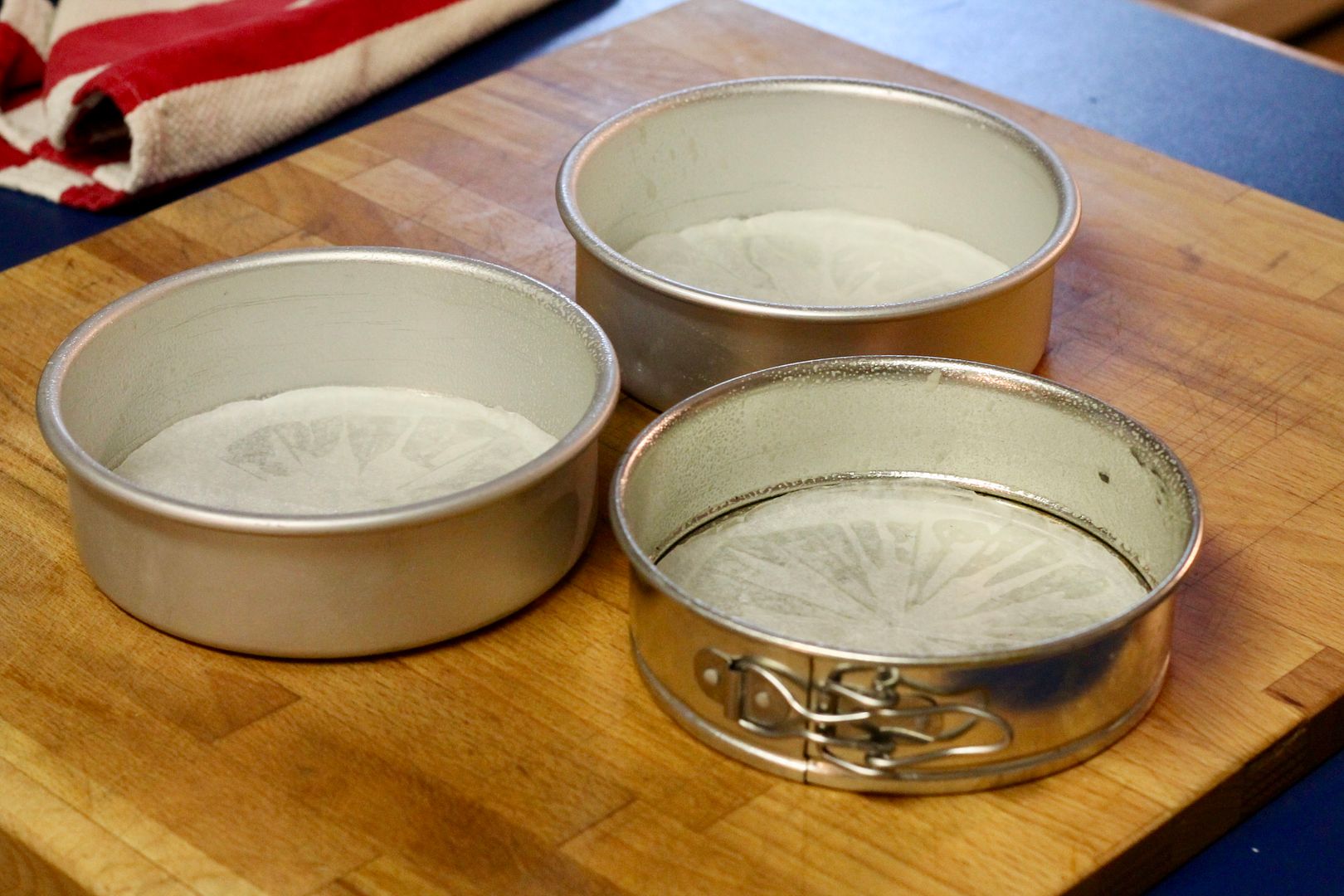
Place the remaining 4 ½ oz cooled, skinless, toasted hazelnuts in the bowl of a food processor along with 6 oz cake flour, and pulse until finely ground to a powdery texture.
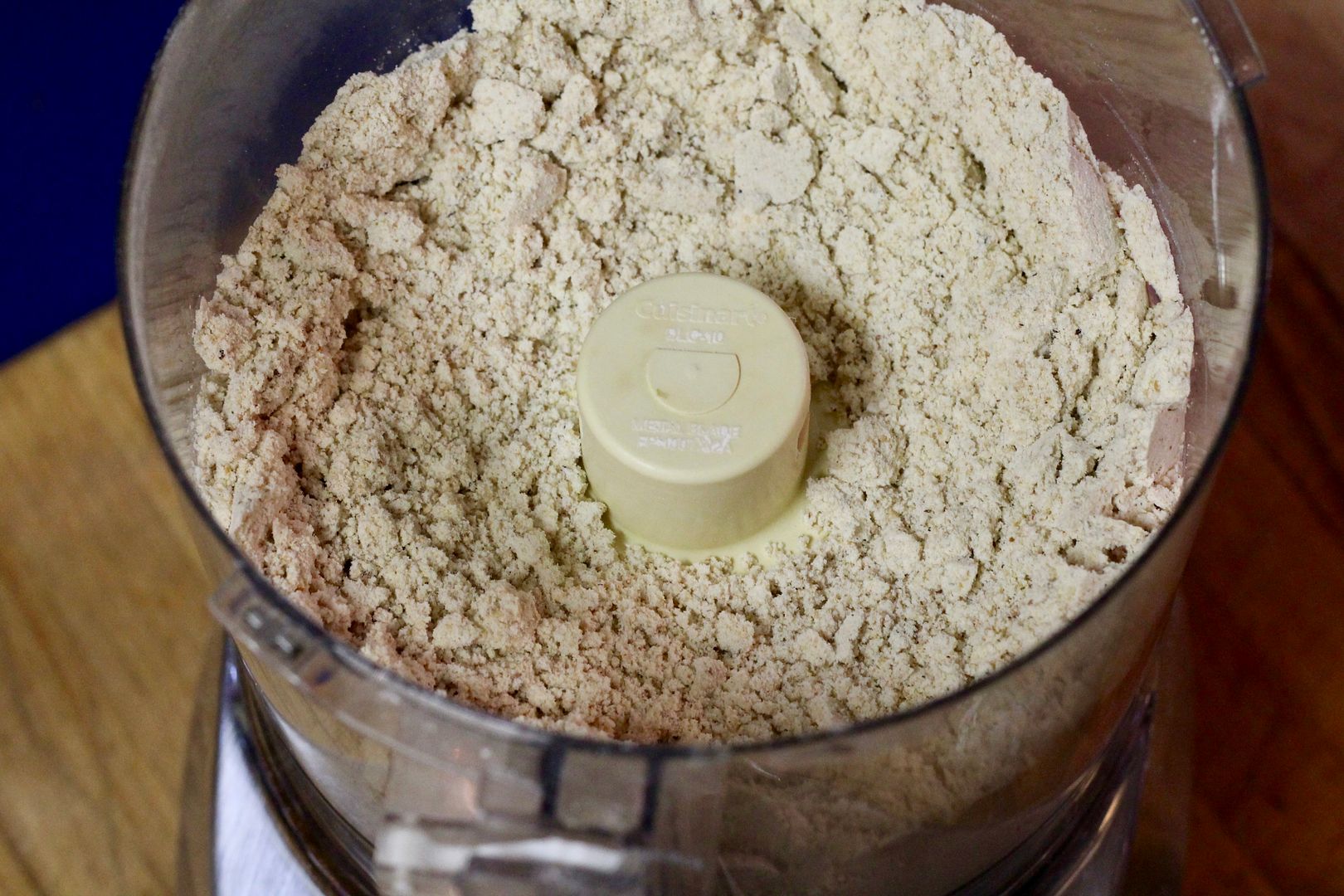
In the bowl of a stand mixer fitted with the paddle attachment, combine:
6 oz unsalted butter, softened to room temperature
8 oz granulated white sugar
1 ¼ tsp baking powder
½ tsp baking soda
pinch kosher salt
Cream until very fluffy and light, about 5 minutes, scraping down the bottom and sides of the bowl once or twice.
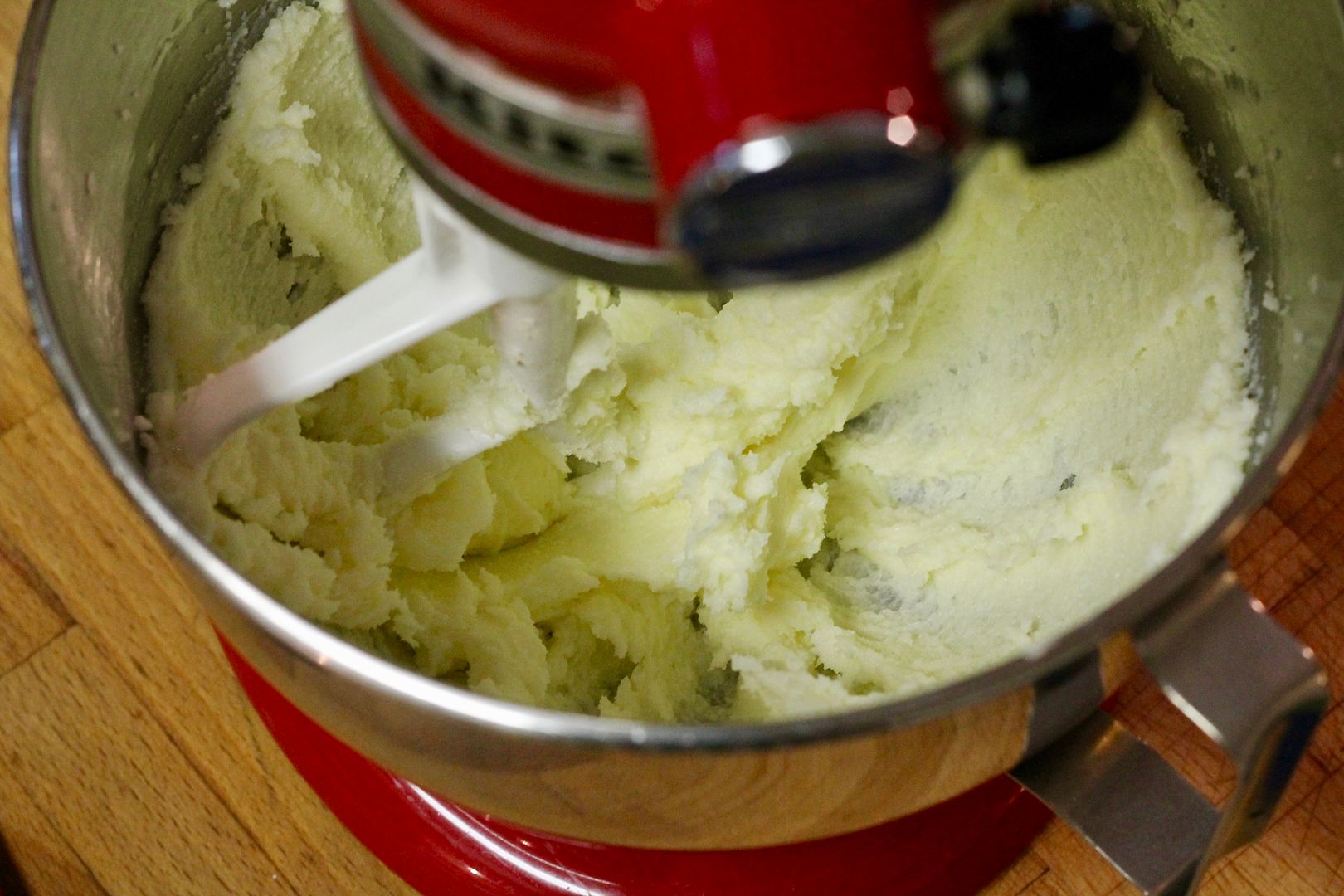
With the mixer running, gradually add 4 ¼ oz egg whites, at room temperature (approximately 4 large egg whites), allowing the mixture to incorporate after each addition and scraping the bowl after each.
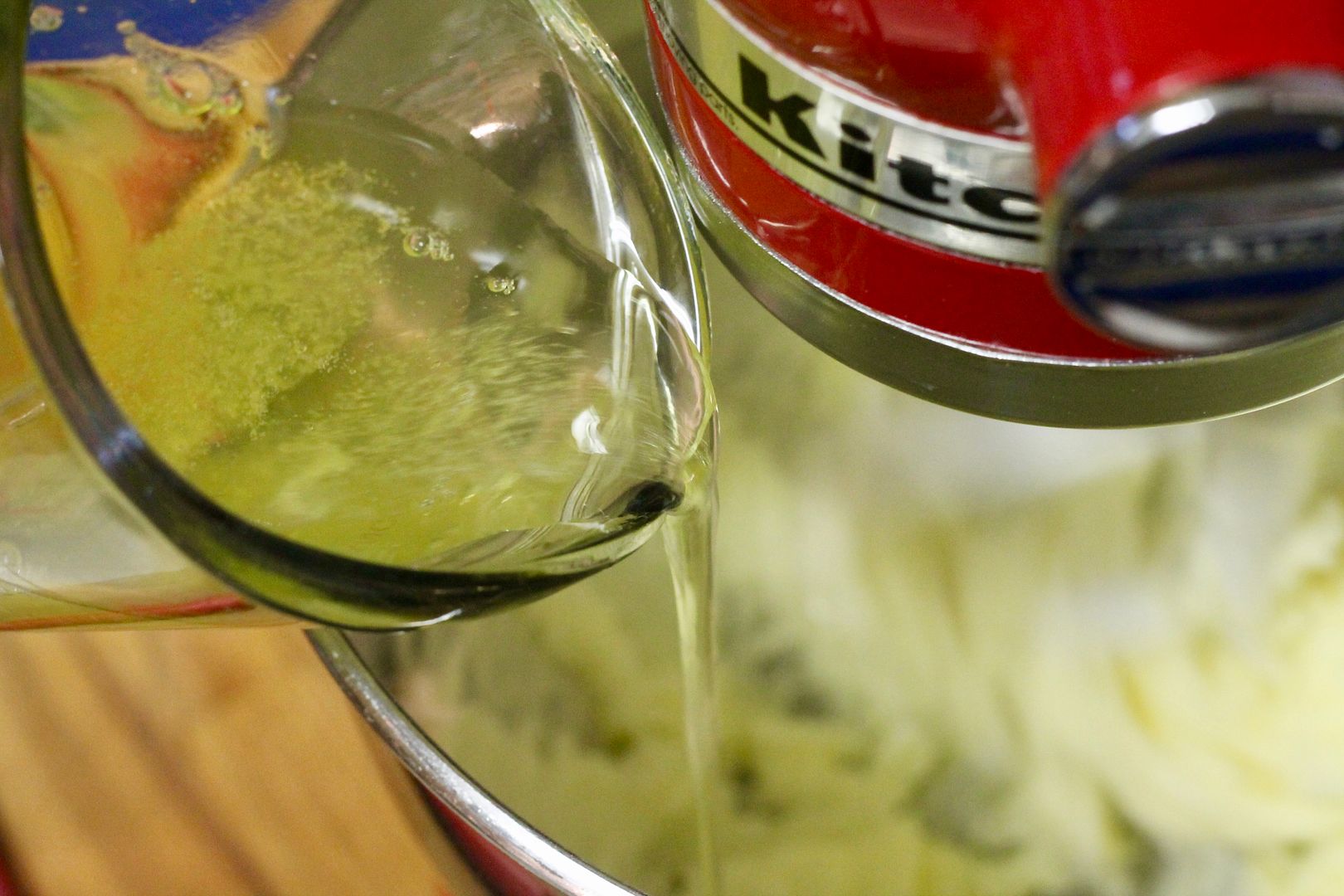
Mix in:
1 tbsp vanilla extract
½ tsp almond extract
Have ready 8 oz cultured low-fat buttermilk, at room temperature.
Reduce the mixer speed to low, and add one-third of the hazelnut-flour mixture to the creamed mixture.
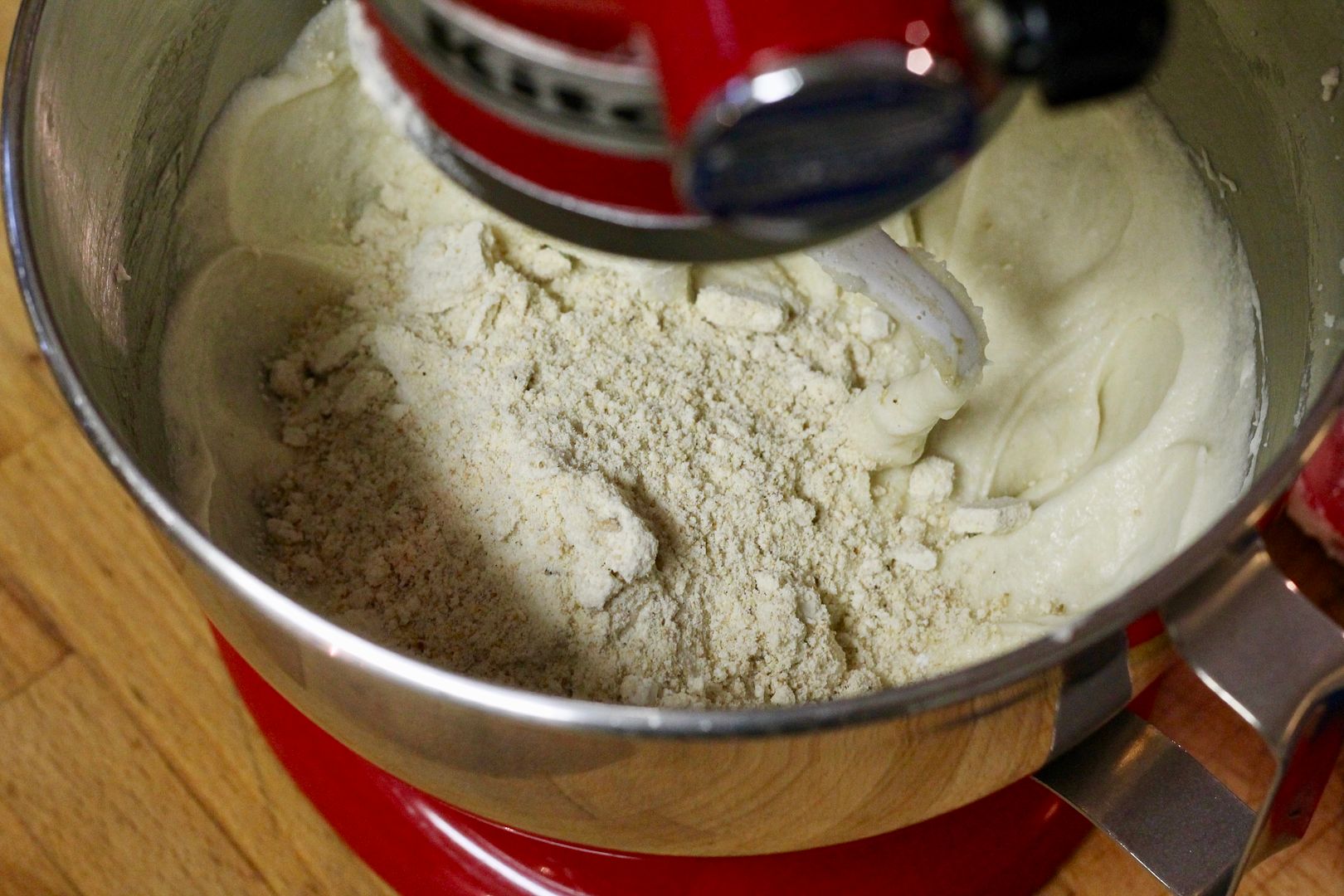
Then, add one-third of the buttermilk.
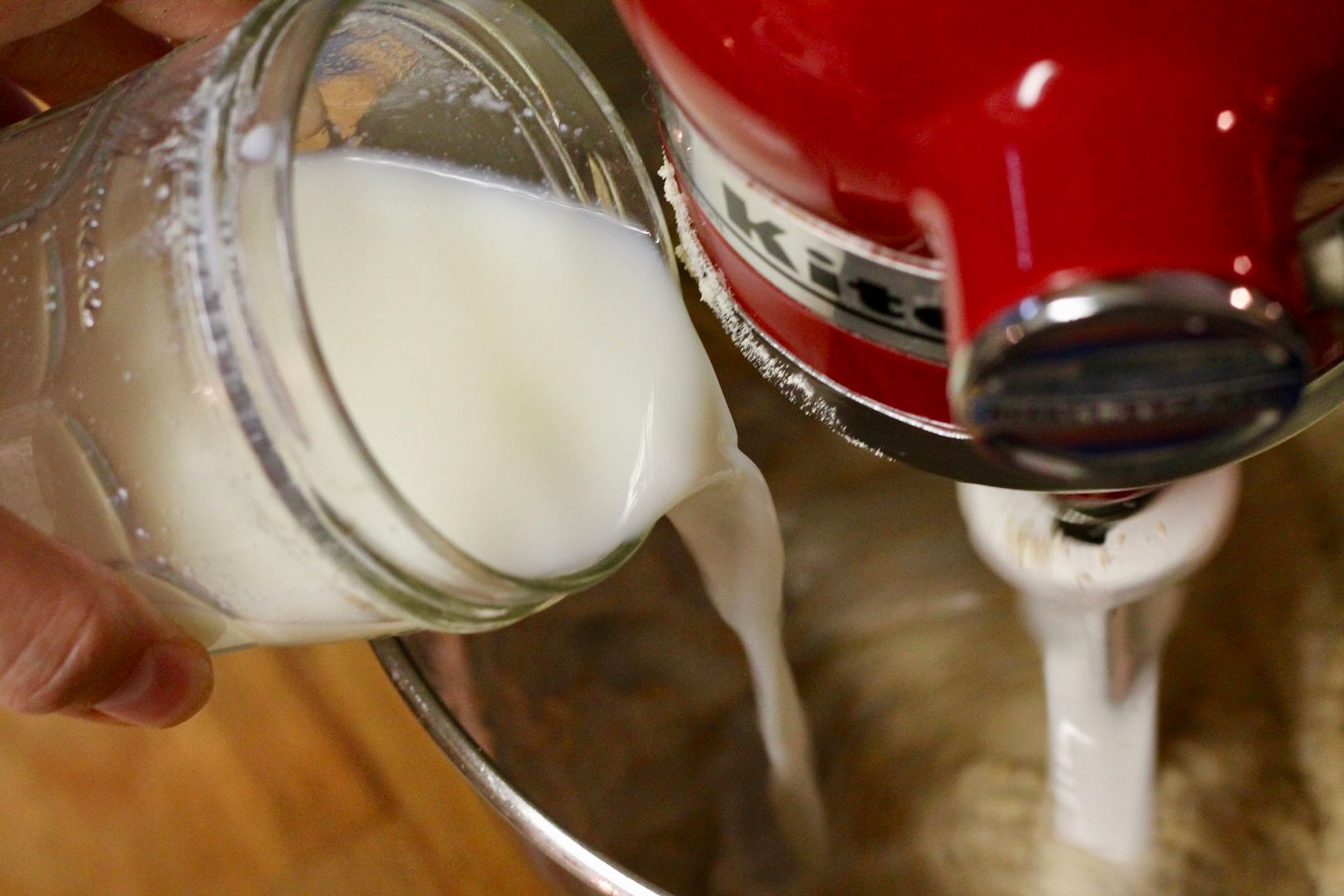
Repeat the additions of flour and buttermilk twice more, allowing the batter to roughly incorporate before the next addition.
Once the batter is evenly mixed, turn off the mixer and give the batter a few folds why hand with a spatula to make sure everything is incorporated and there are no pockets of flour or butter at the bottom of the bowl.
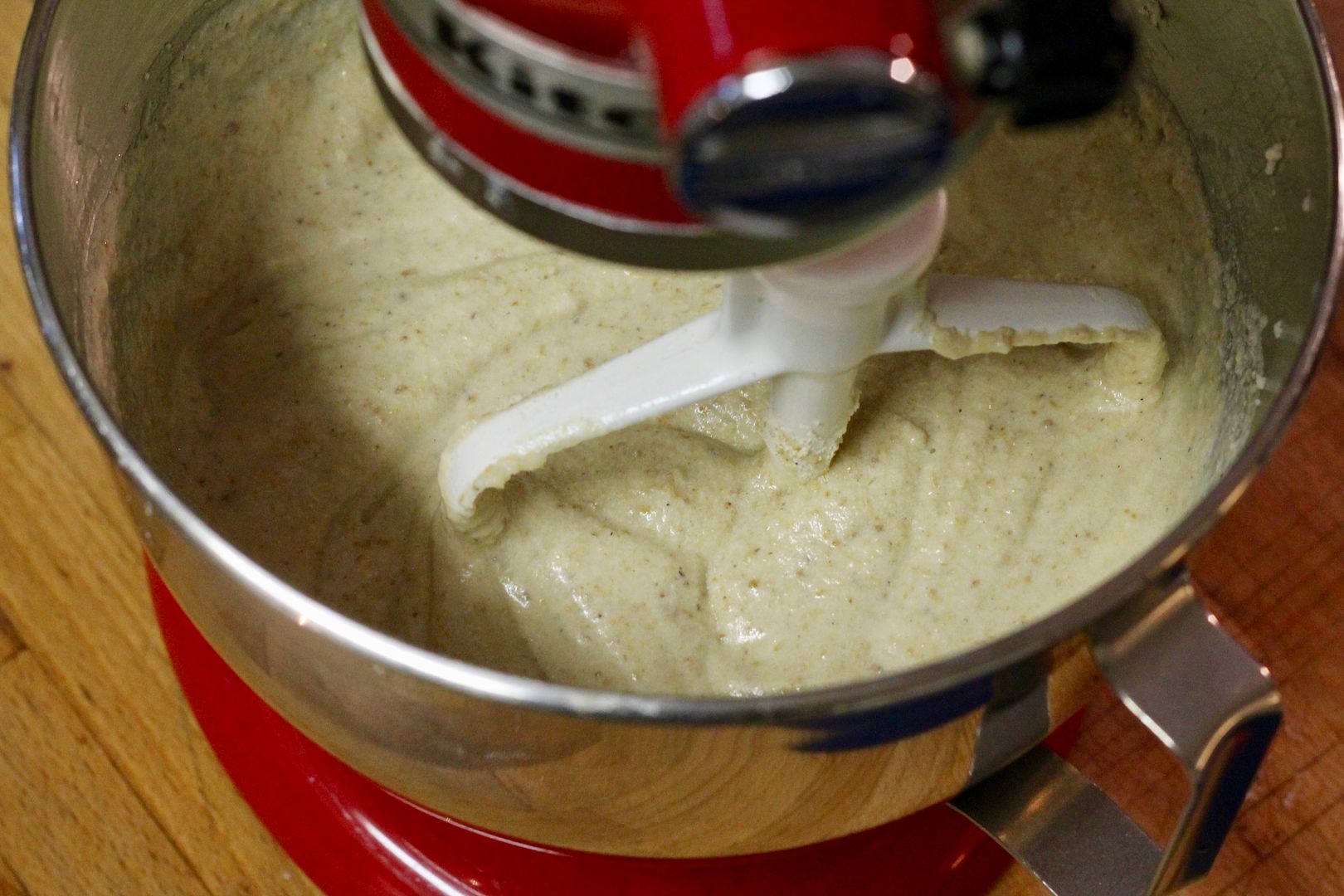
Divide the batter evenly between the 3 prepared cake pans (about 11-12 oz of batter in each).
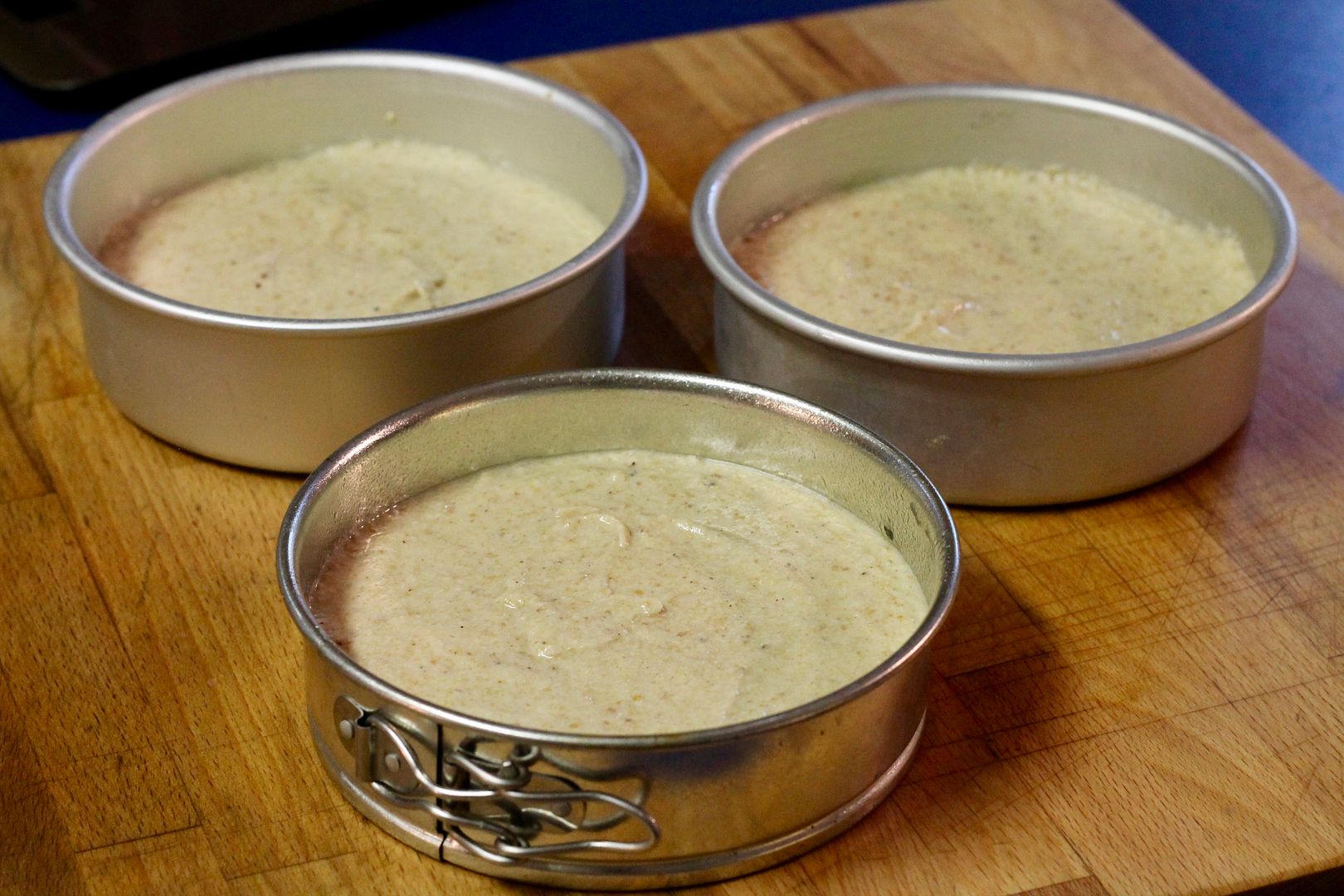
Bake in the preheated 325˚F (300˚F convection) oven for about 35-40 minutes, until golden around the edges and firm yet springy in the middle – a cake tester should come out with a few moist crumbs sticking to it.
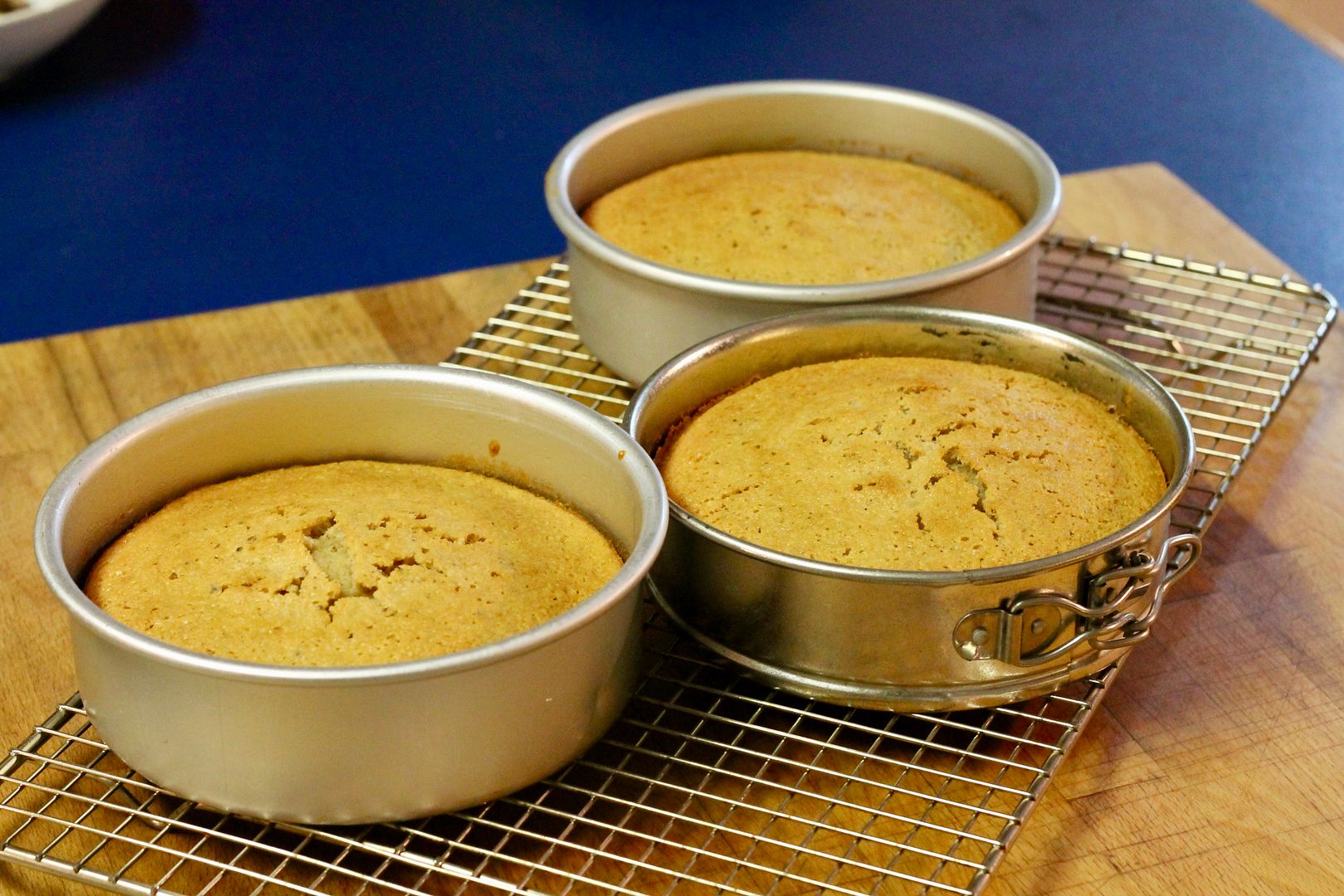
Run a dull knife around the edge of each cake to loosen it from the pan, and allow the cakes to cool for about 15 minutes, then invert them out of the pans into a cooling rack, and allow them to cool completely.
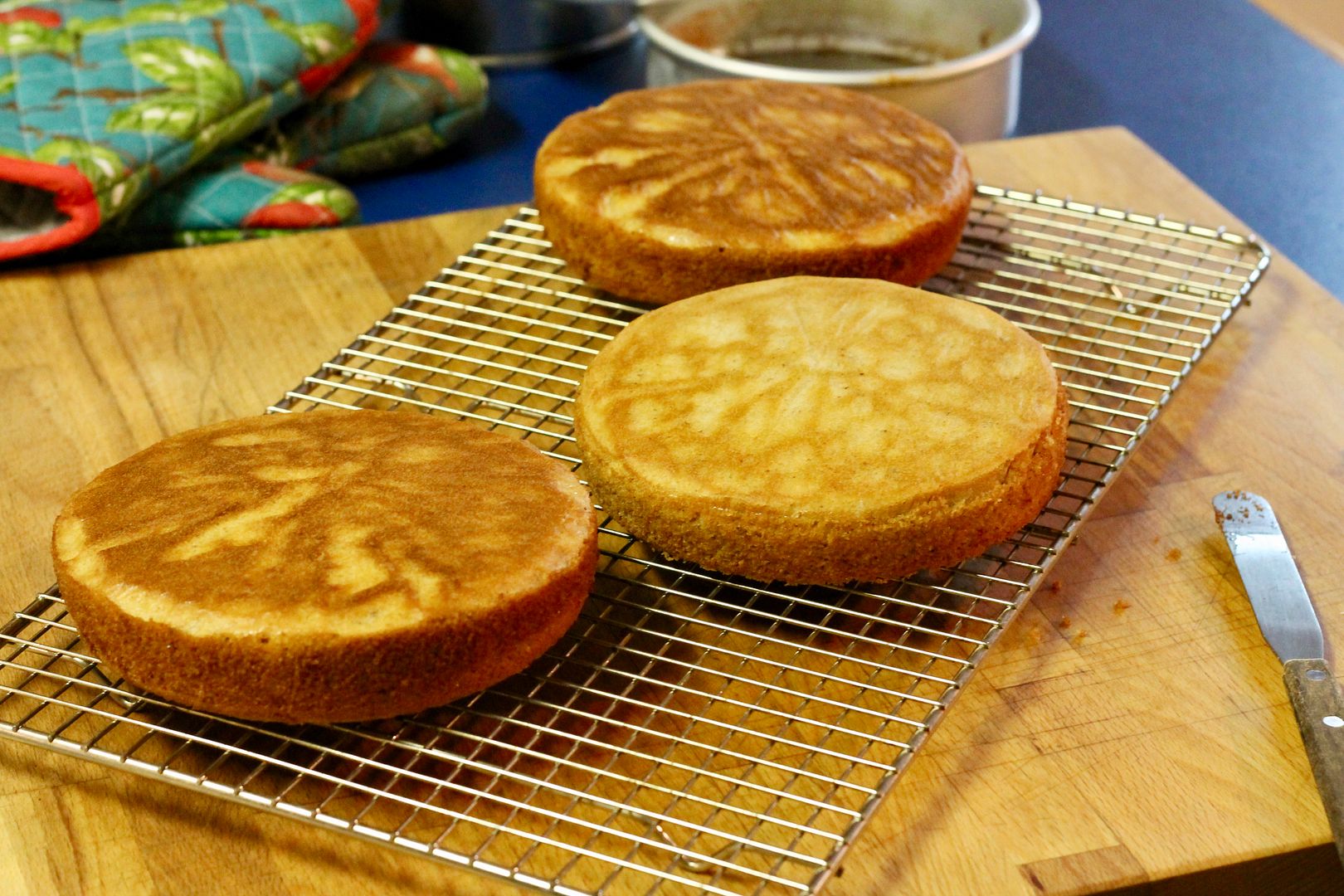
Berry Jam
Place 10 oz blackberries in the bowl of a food processor and process until smooth.
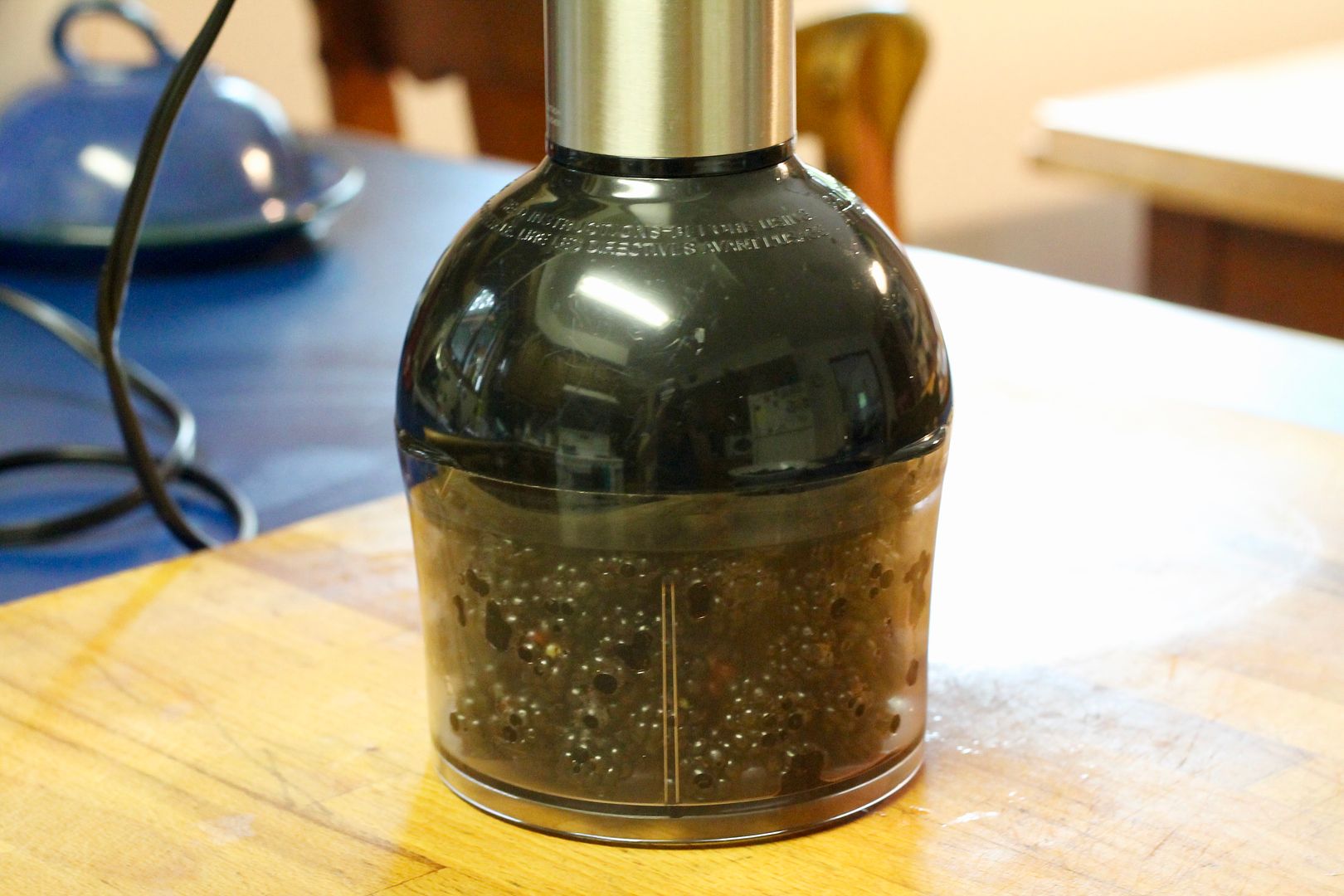
Place half of the berry puree in a medium saucepan. Strain the other half of the puree through a strainer to remove the seeds, and add the smooth puree to the saucepan.
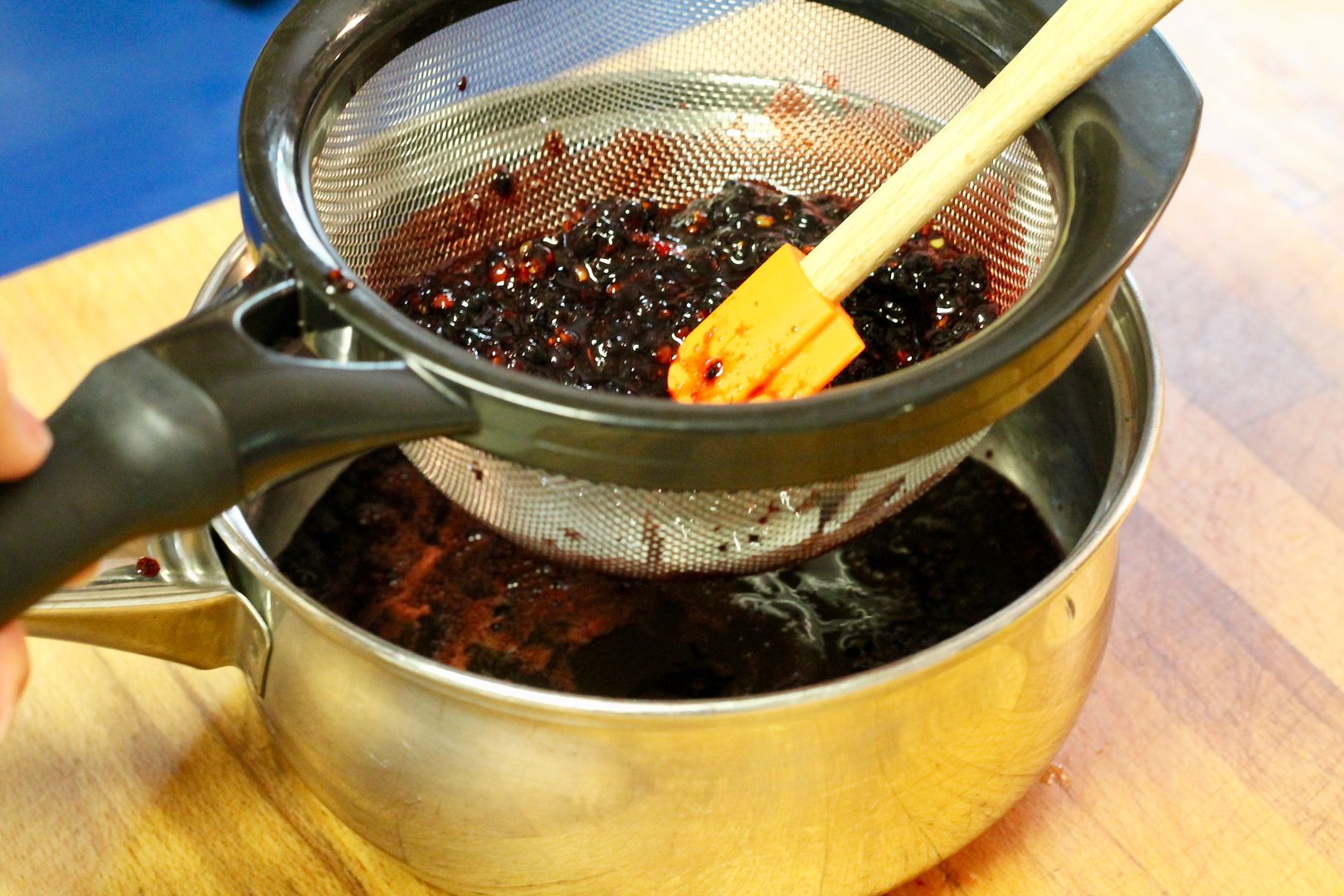
Add 4 oz granulated white sugar and boil over medium-high heat for several minutes, stirring occasionally, until it thickens and turns into jam (about 220˚F).
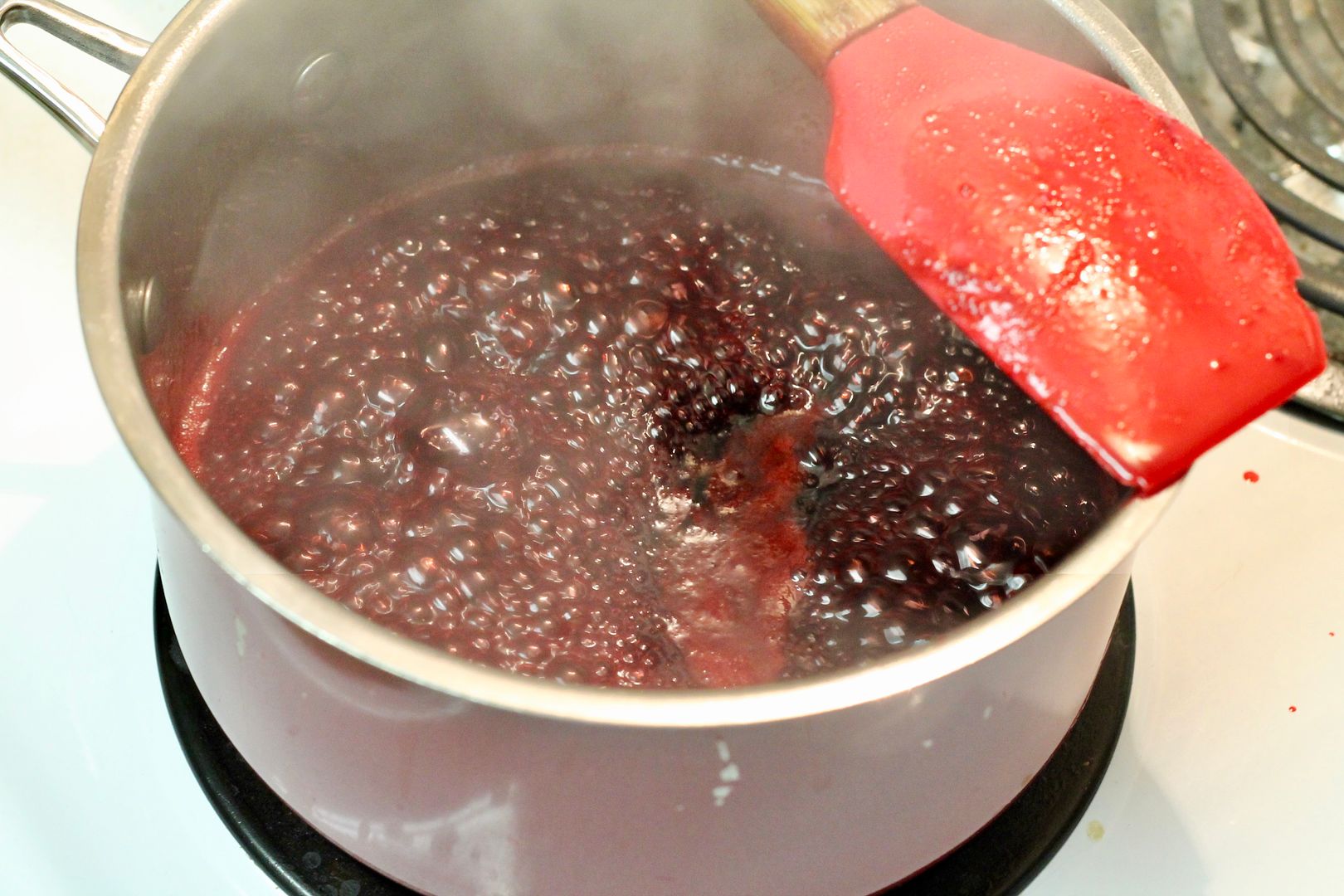
Pour into a bowl and allow to cool completely (you can speed this up by putting it in the fridge).
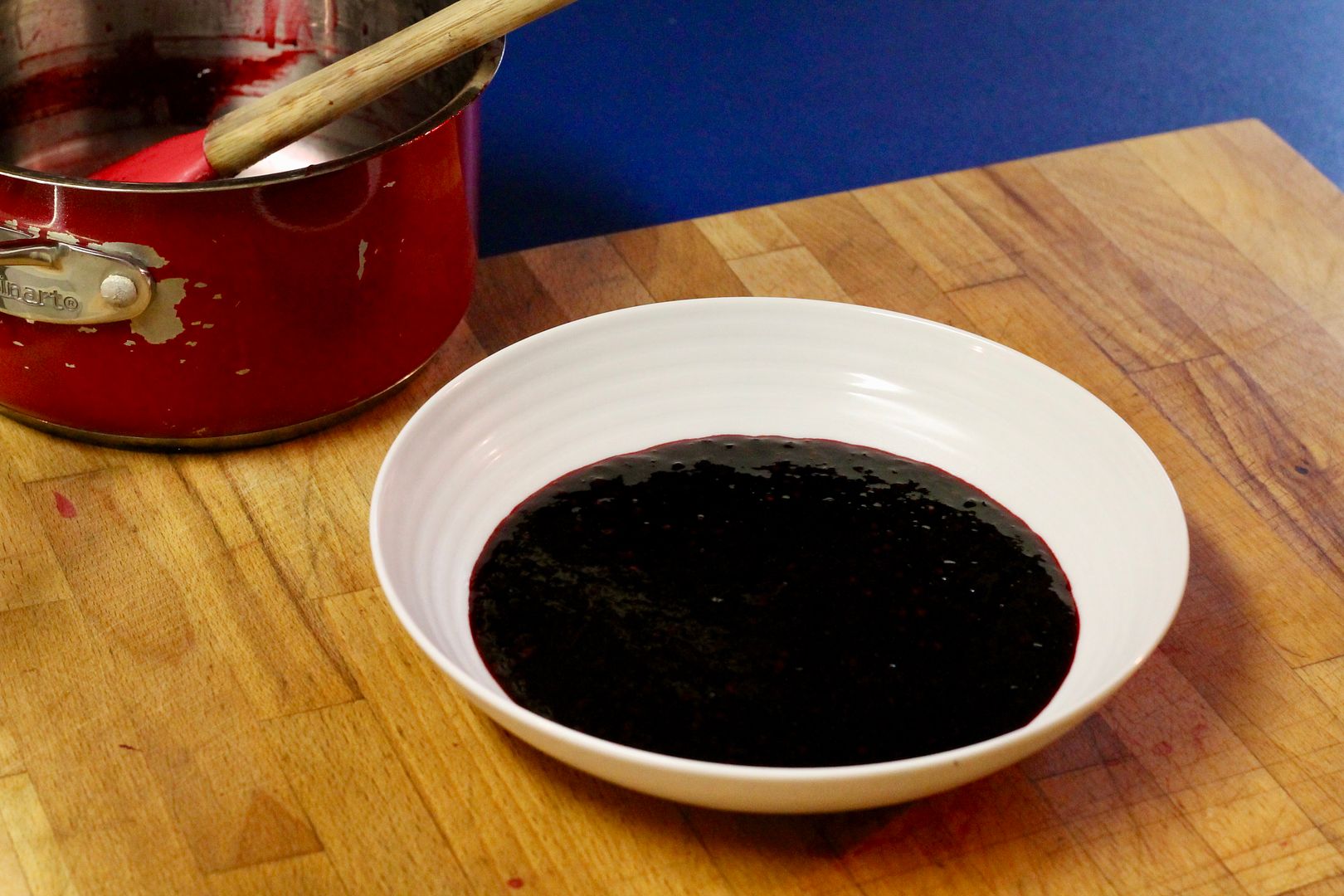
Vanilla Swiss Meringue Buttercream
Adapted slightly from Stella Parks on Serious Eats. Makes about 3 generous cups.
Prepare a double boiler by filling a medium saucepan with an inch of water and placing a ring of crumpled-up aluminum foil in the bottom – this will keep the bottom of the bowl from touching the bottom of the pot. Place the pan over medium heat until steaming, then keep it at a gentle simmer.
In a very clean stand mixer bowl, place:
3 oz egg whites (2 ½-3 large egg whites)
5 ½ oz granulated while sugar
pinch kosher salt
1/8 tsp cream of tartar
Place this bowl over the steaming water in the saucepan, and stir constantly with a spatula until the mixture reaches 185˚F. This should take about 10 minutes, so just adjust the heat if it’s taking too long.
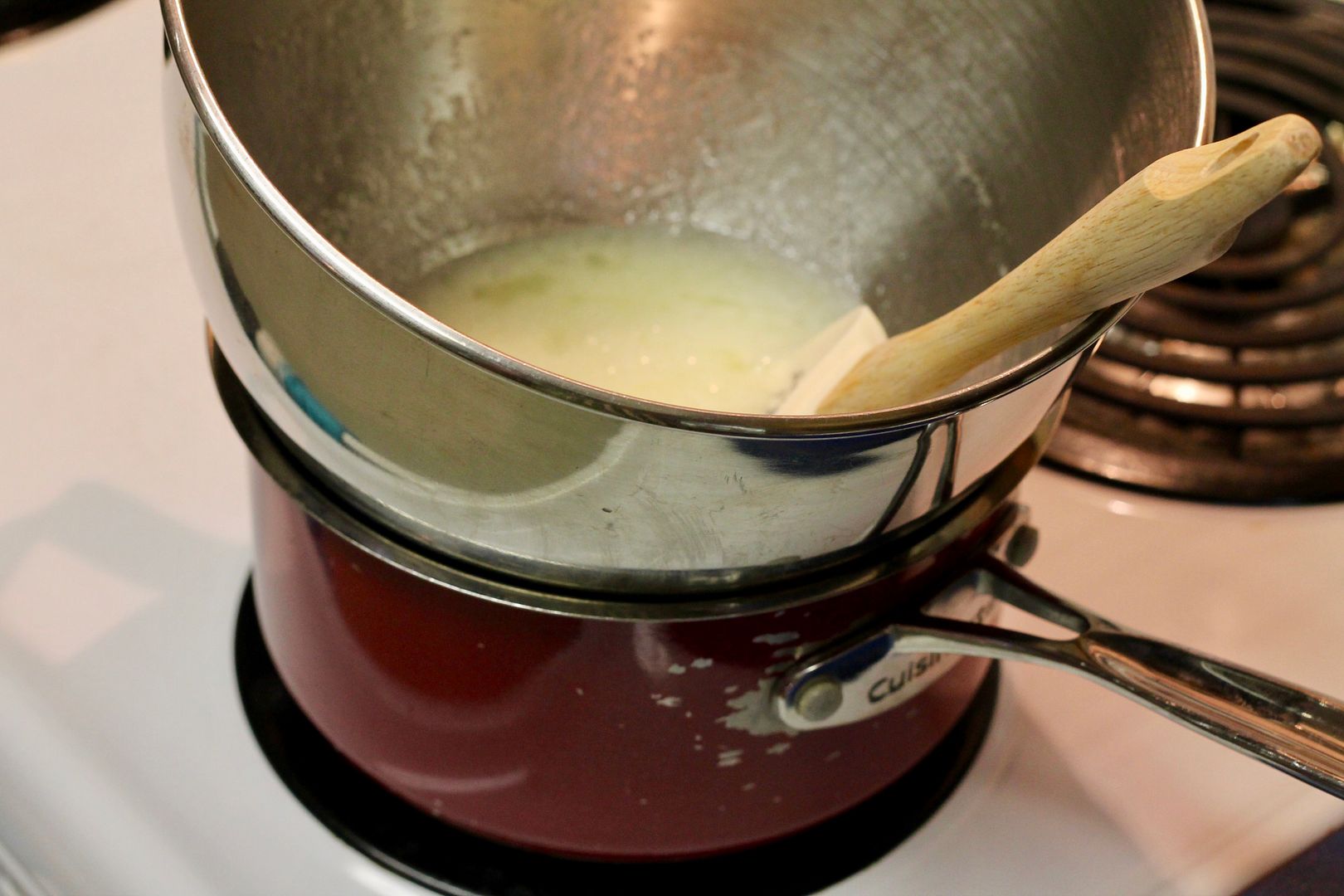
Remove the bowl from the double boiler and attach it to the stand mixer. With the whisk attachment, beat the egg white mixture on high speed until you have a thick, glossy meringue with stiff peaks, about 10 minutes. You also want to ensure that the meringue is totally cool to the touch, around 90˚F, before you continue, so keep mixing until this is achieved.
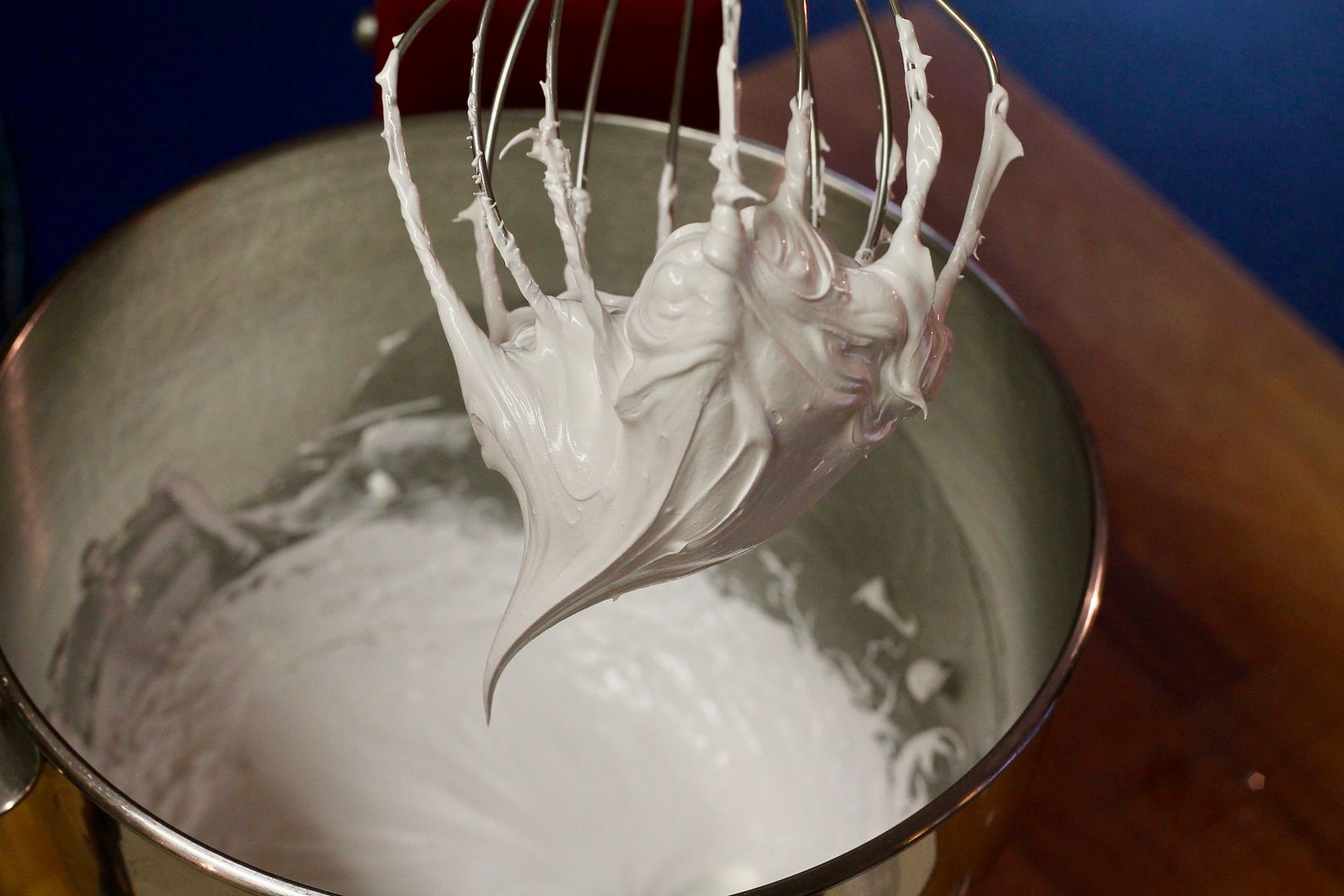
While the meringue whips and cools, cut 10 oz unsalted butter into cubes and bring it to room temperature, around 65˚F.
With the mixer on medium speed, add the butter to the cooled meringue, one cube at a time.
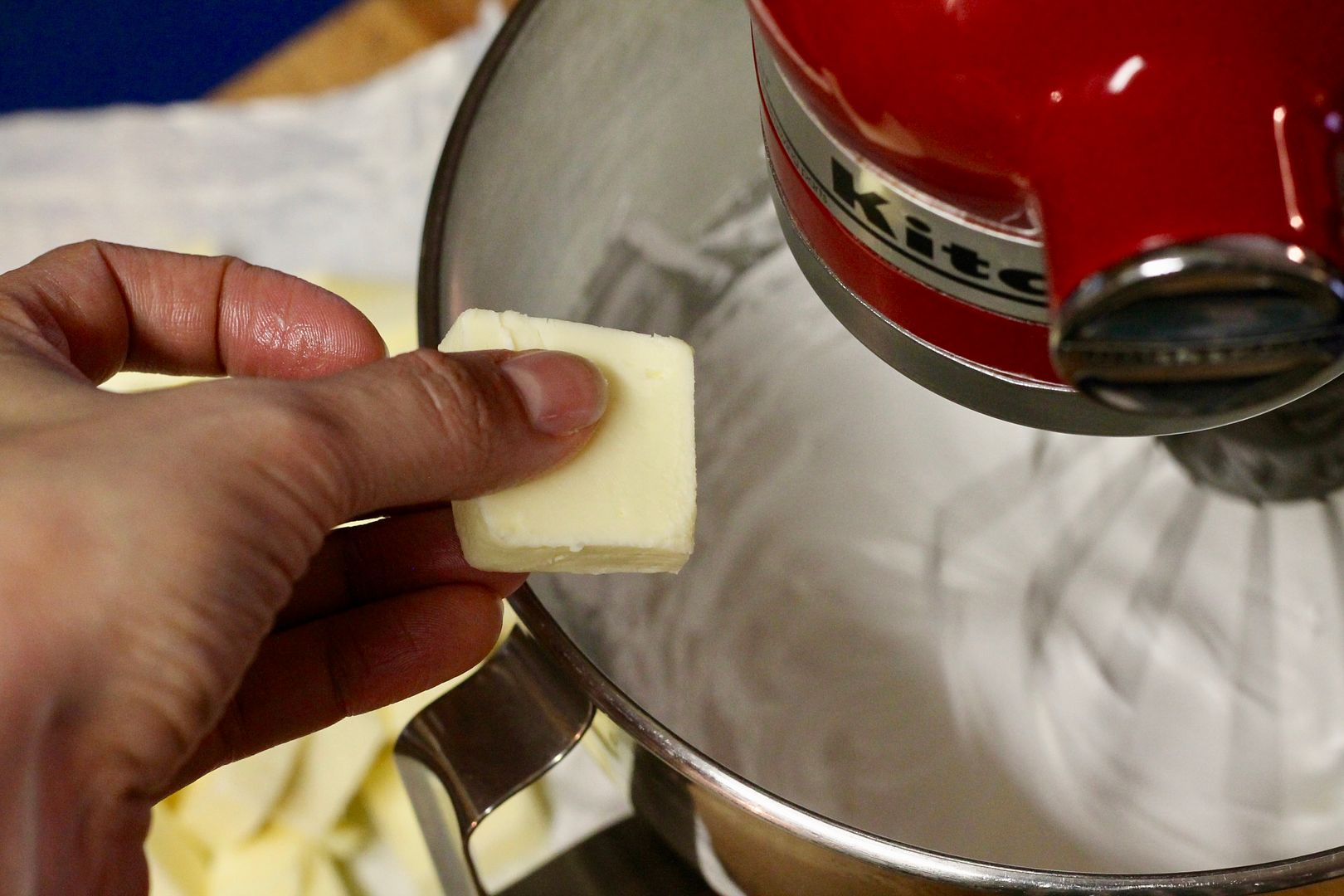
The butter will emulsify into the meringue and gradually turn into buttercream. If it doesn’t, it’s probably either that the butter was too cold, or the meringue was too warm. Check out this troubleshooting guide to fix it.
Once all the butter is incorporated and you have a creamy, smooth buttercream, add 1/2 tsp vanilla. Give the bottom and sides of the bowl a good scrape, then whip the buttercream on high for a minute or two. At this point, it should be around 72˚F for optimal frosting consistency.

Assembly
With a long serrated knife, trim the tops of the hazelnut sponge cakes to level. Place the first cake layer in the middle of a revolving cake decorating stand.
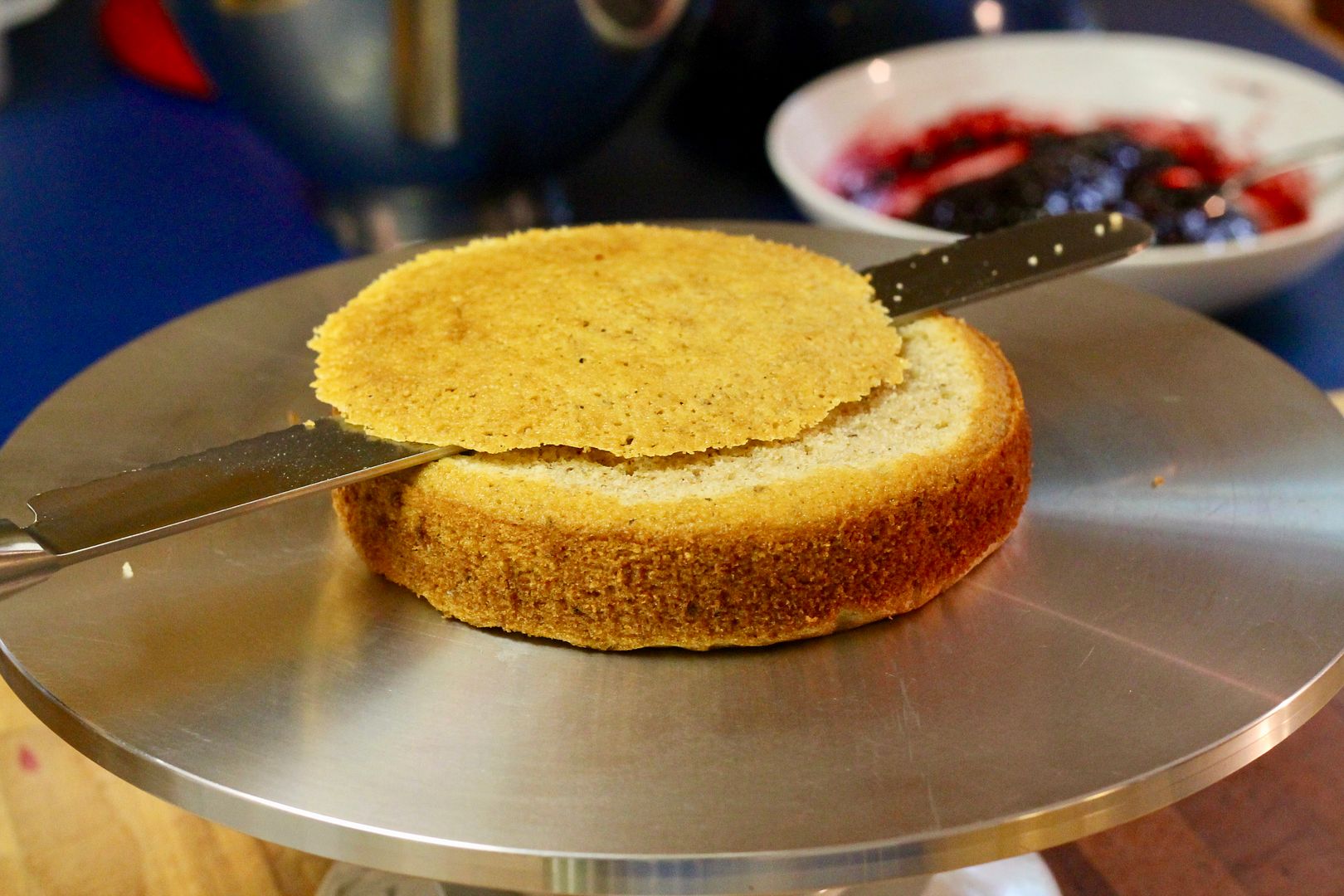
Give the cooled blackberry jam a good stir (it may set quite firmly when cool), then spread about 2 tbsp jam over top of the first cake layer, almost all the way to the edges.
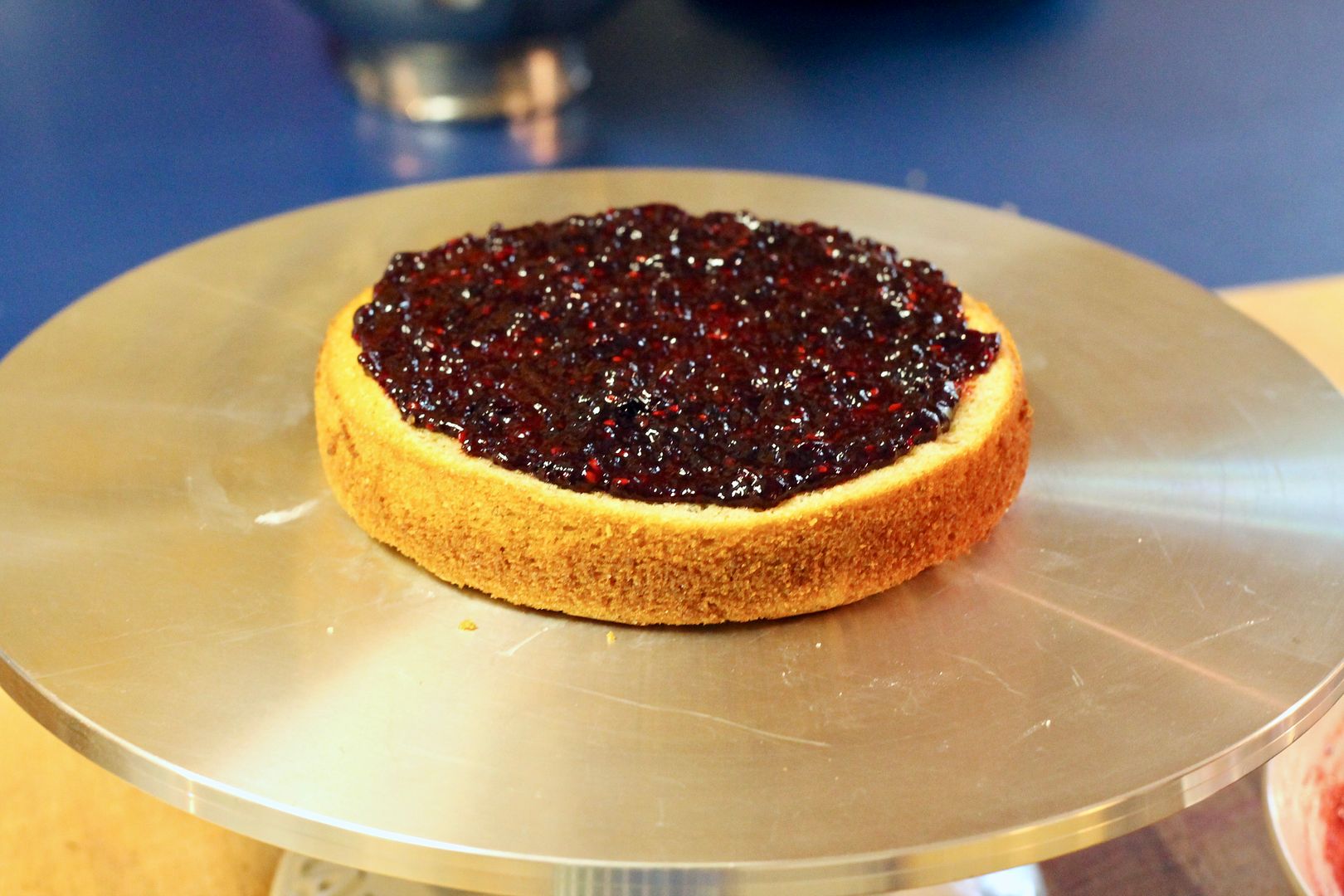
Top the jam with ½ cup vanilla buttercream, spreading it evenly all the way to the edges of the cake.
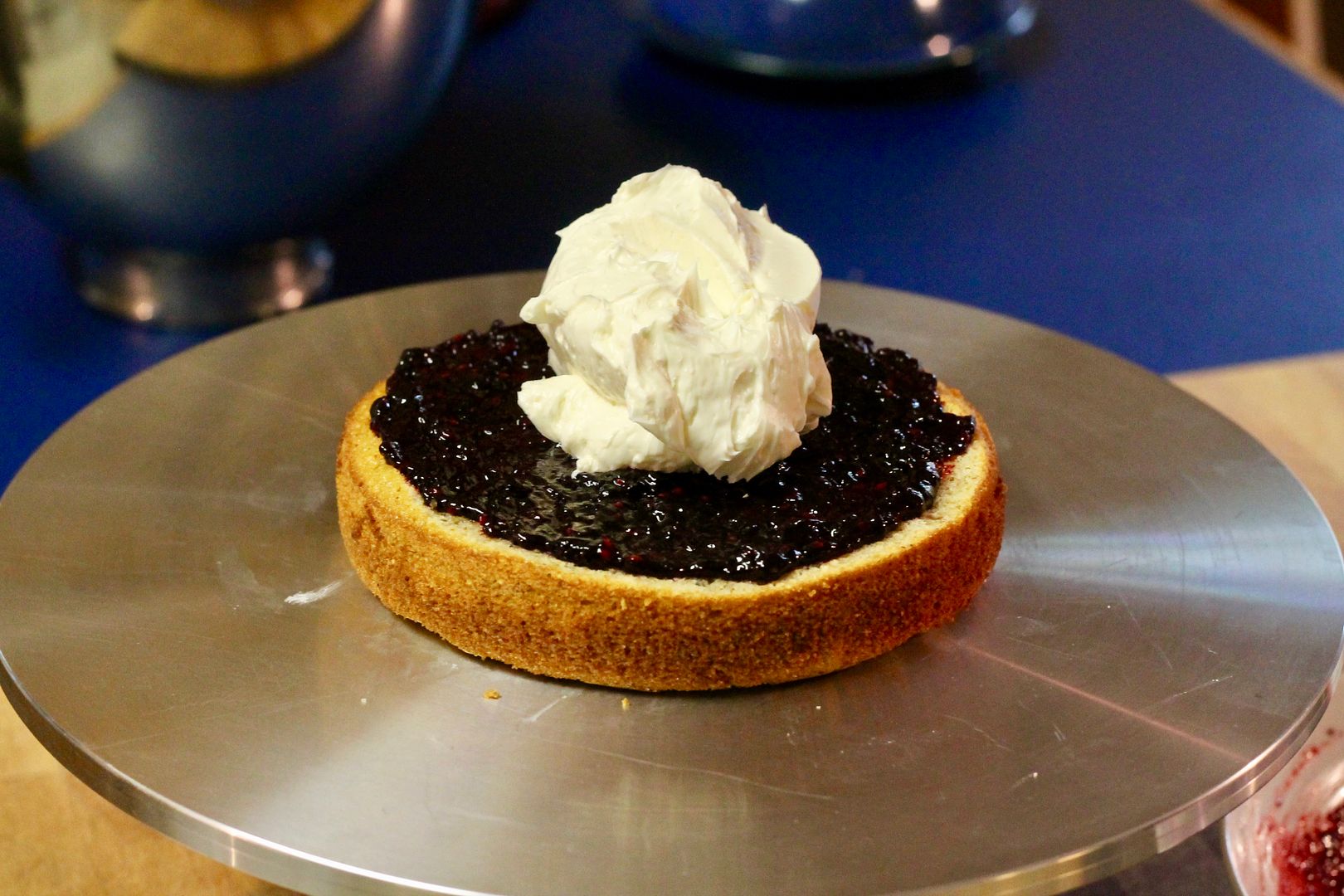
Top with the second cake layer, and repeat the jam and buttercream layers. Finally, top with the third cake layer, pressing gently to make sure everything is adhered and level.

Crumb-coat the cake with a thin layer of buttercream to lock in the blackberry jam and any crumbs, and chill the cake for 20 minutes.
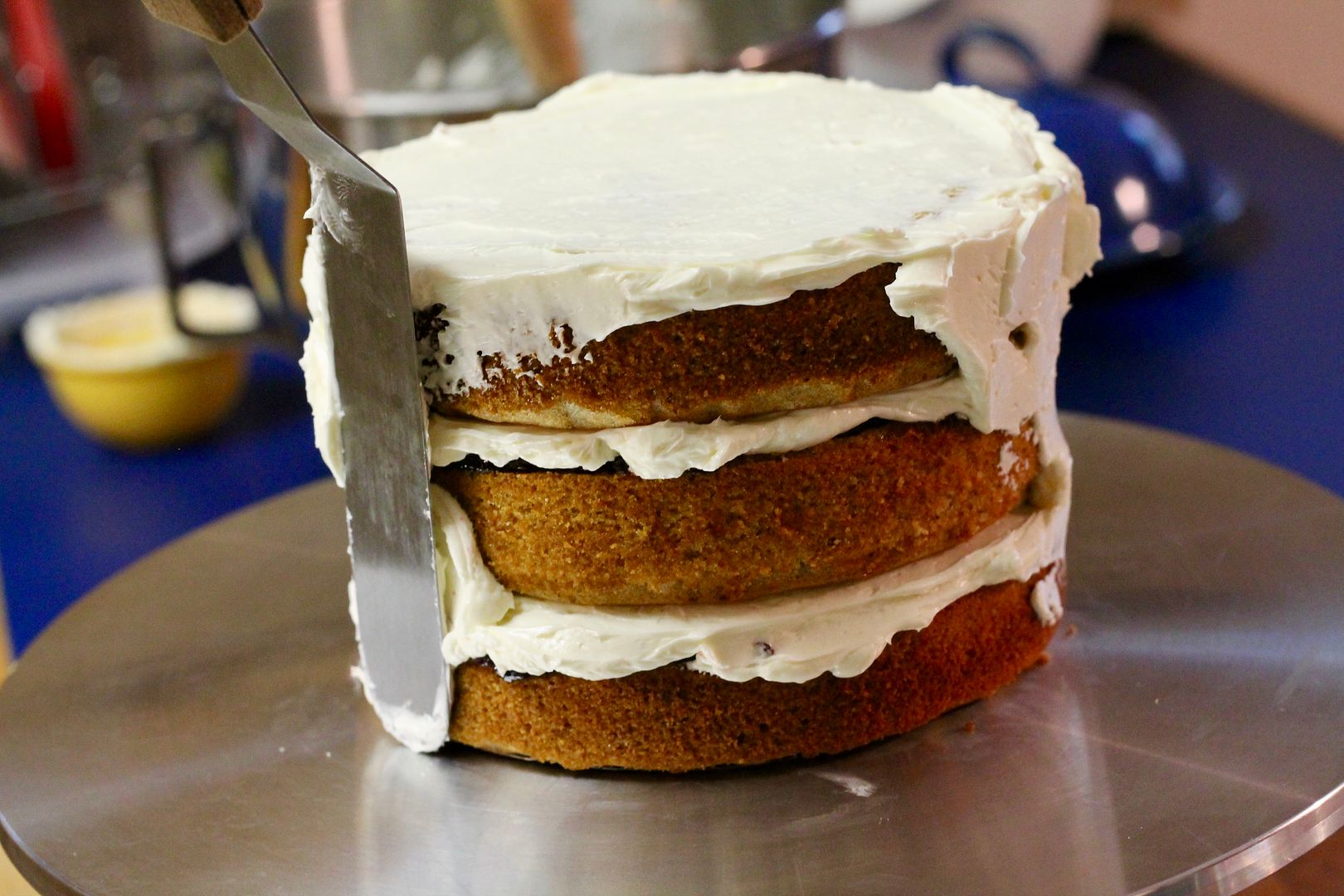
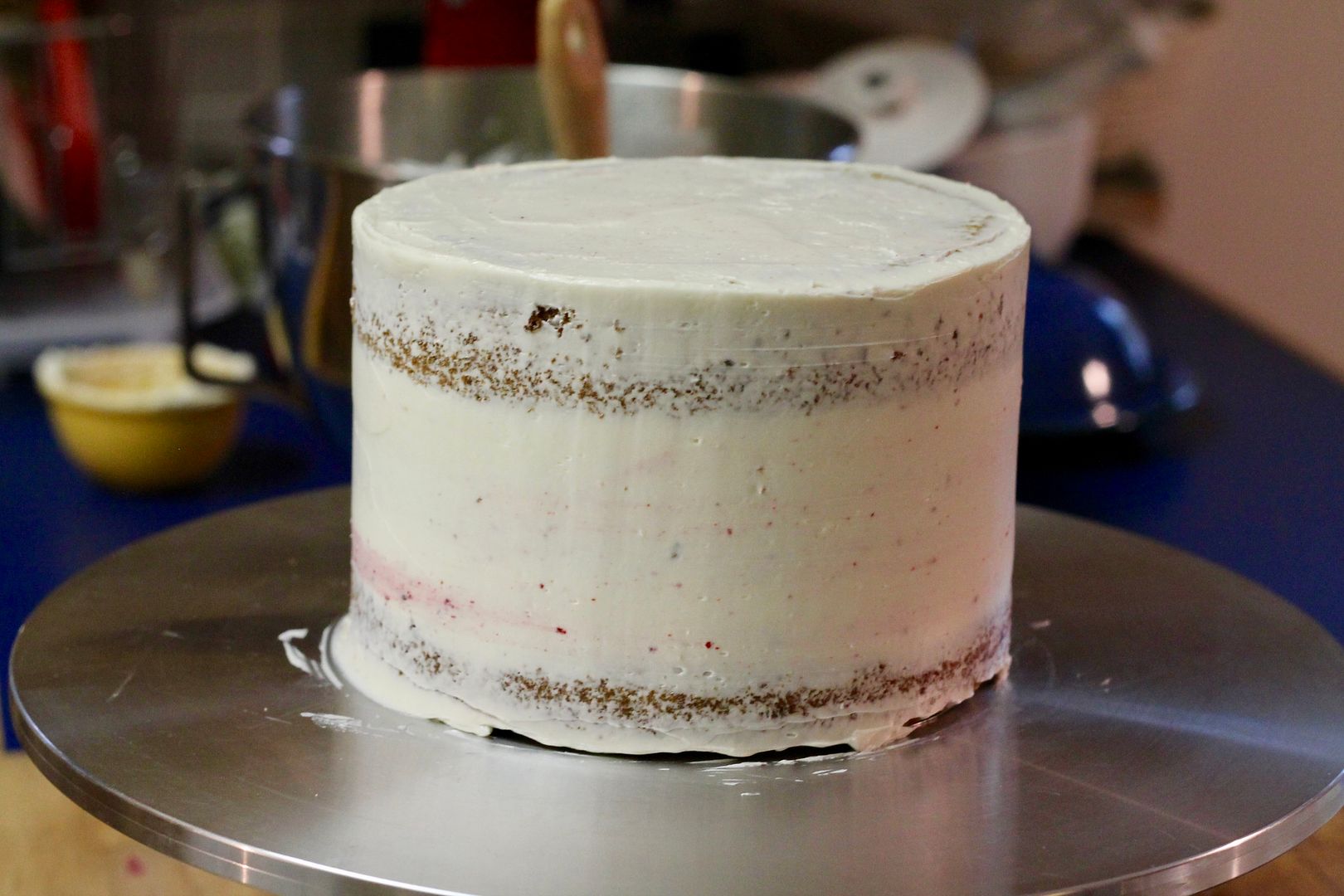
Finish frosting the chilled cake with the remaining vanilla buttercream, smoothing out the top first and then the sides, leaving a small lip of buttercream sticking up around the top.
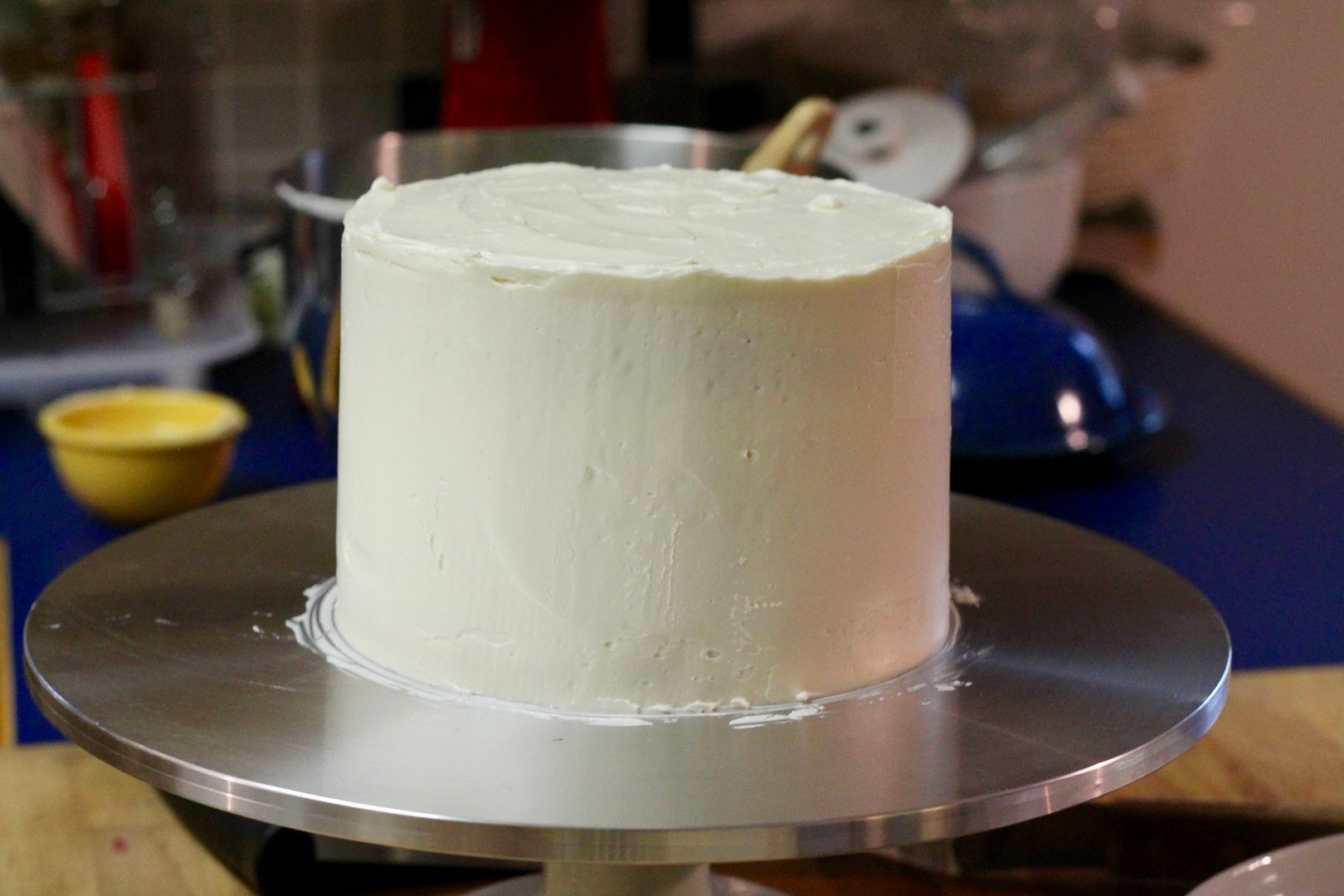
Spread a thin layer of jam on top of the cake and about 1 inch down the sides, leaving the lip of buttercream intact.
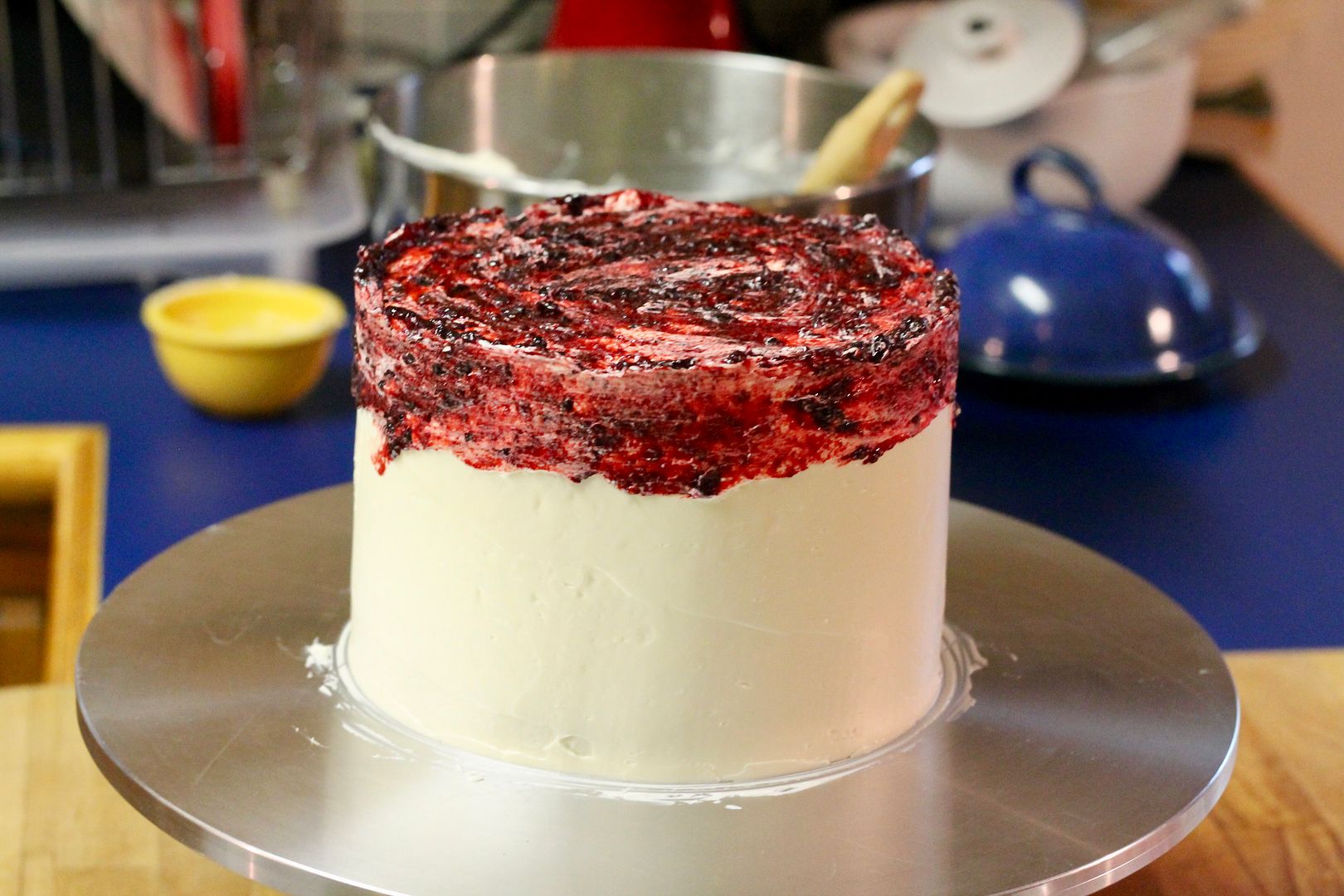
Use an offset spatula to spread the jam down the side of the cake in single diagonal strokes while slowly rotating the cake decorating stand, overlapping each stroke slightly, to give a gradient affect (here’s a great video demonstration of this technique).
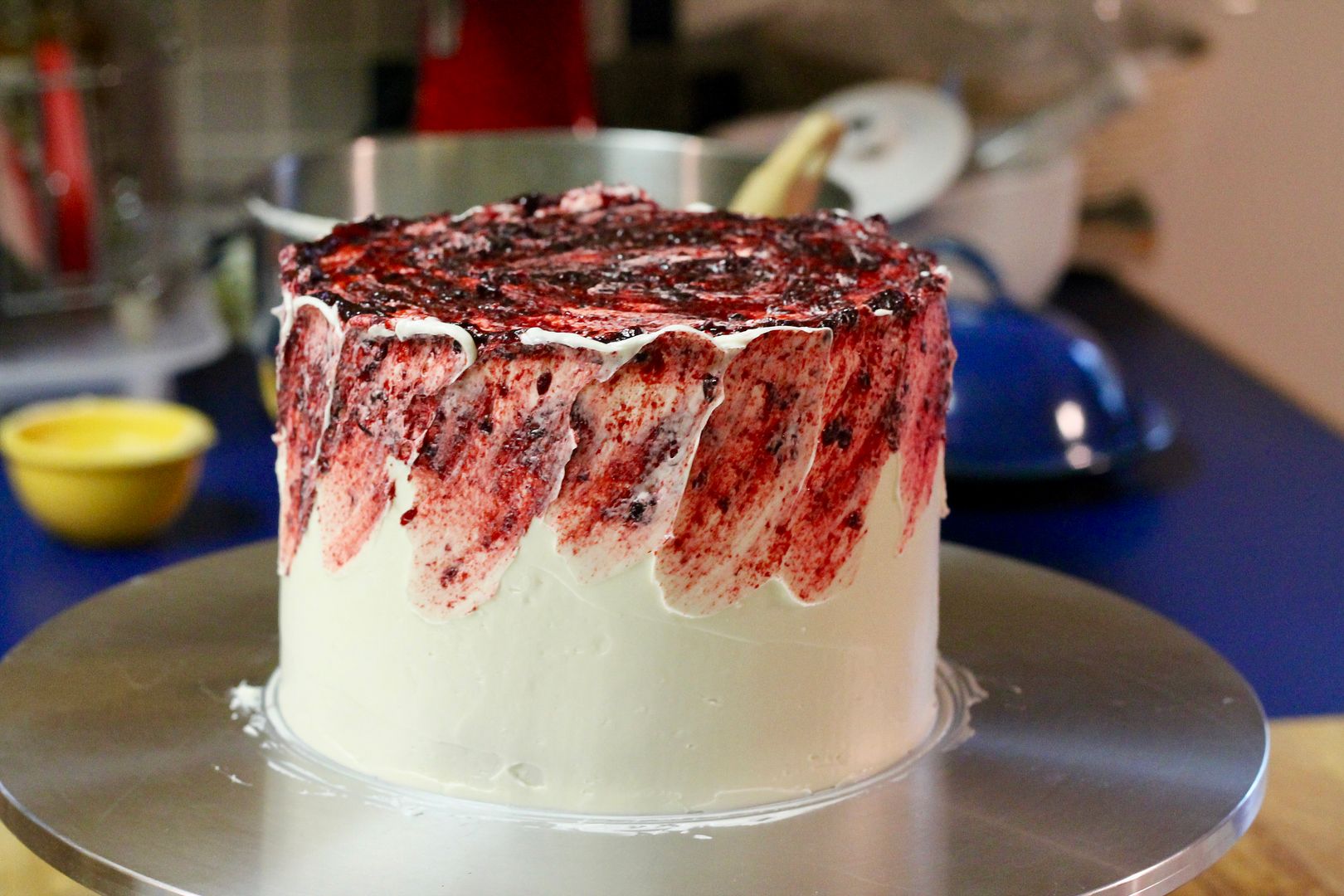
Holding the tip of the spatula gently against the top of the cake at the edge, spin the cake decorating stand as you pull the spatula inward to create a spiral.
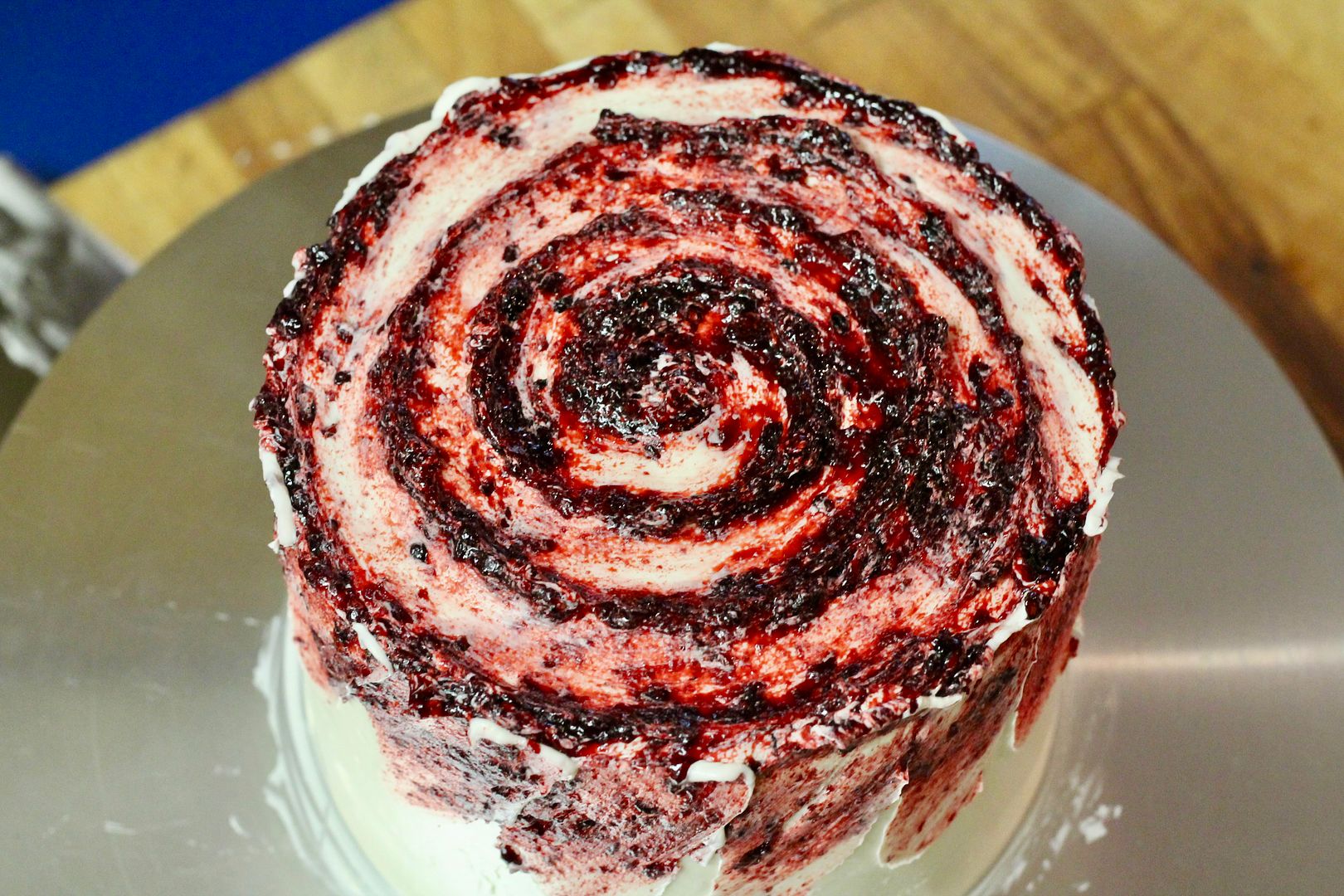
Roughly chop the 1 oz reserved hazelnuts and sprinkle them around the edge of the cake.

The cake is best served at room temperature and will keep, covered, at room temperature for up to 24 hours. If you are making the cake in advance, chill it as soon as it is assembled, then once the buttercream is hard, wrap it in plastic wrap and store in the fridge for up to 36 hours. Bring it to room temperature before serving, and store any leftovers in an airtight container in the fridge.

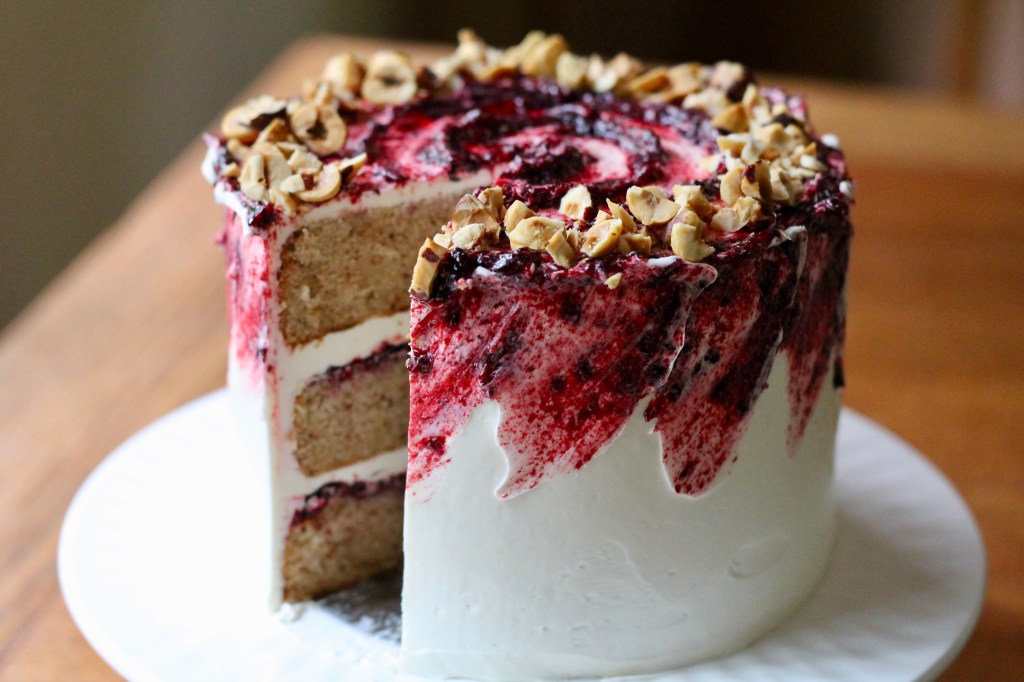

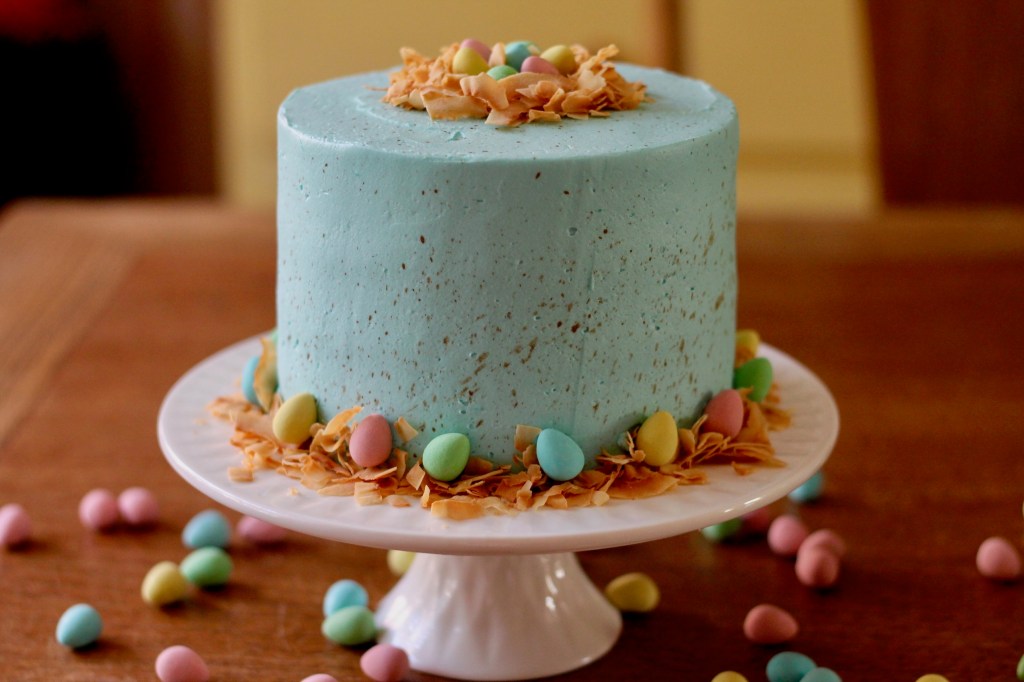
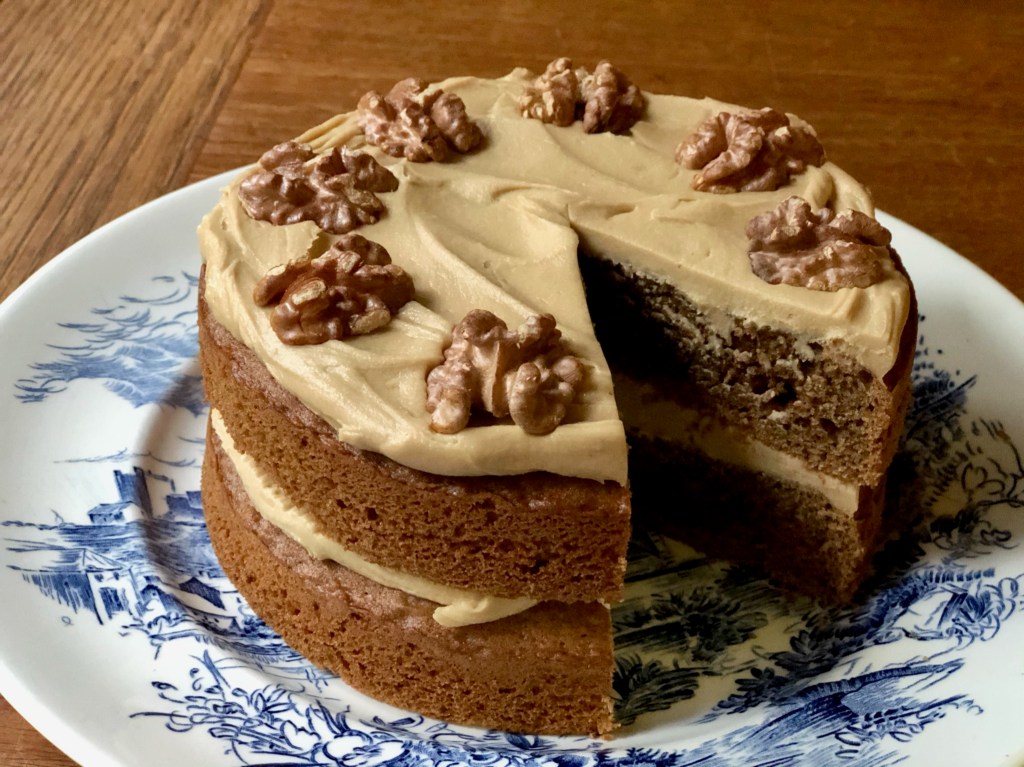
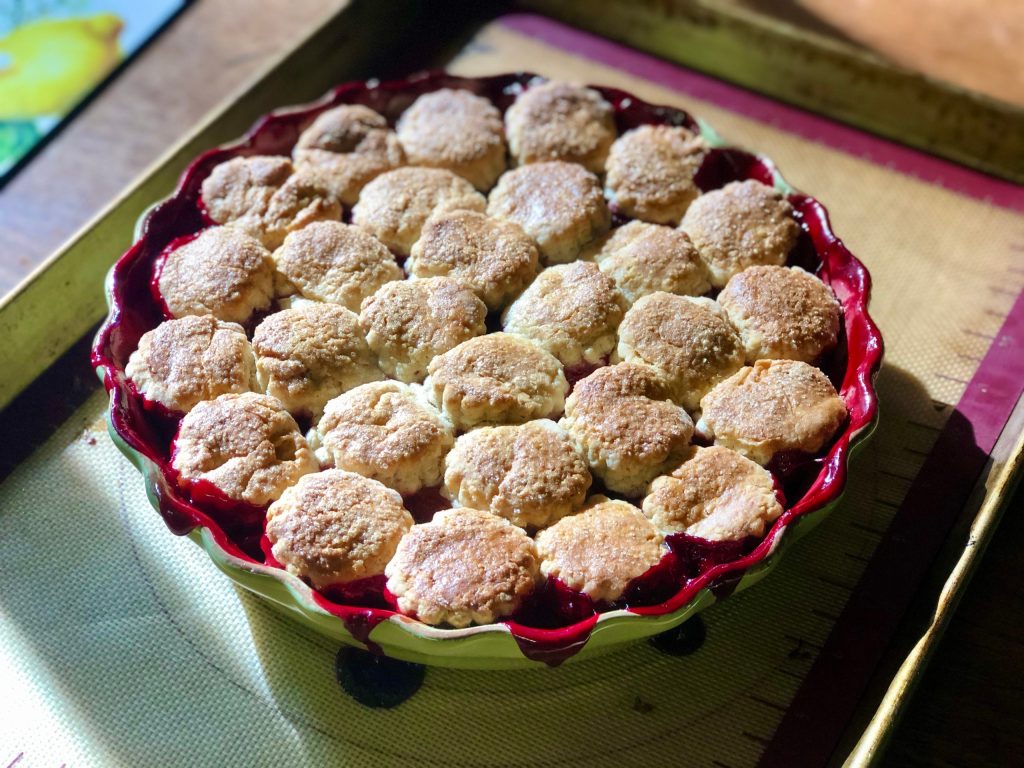
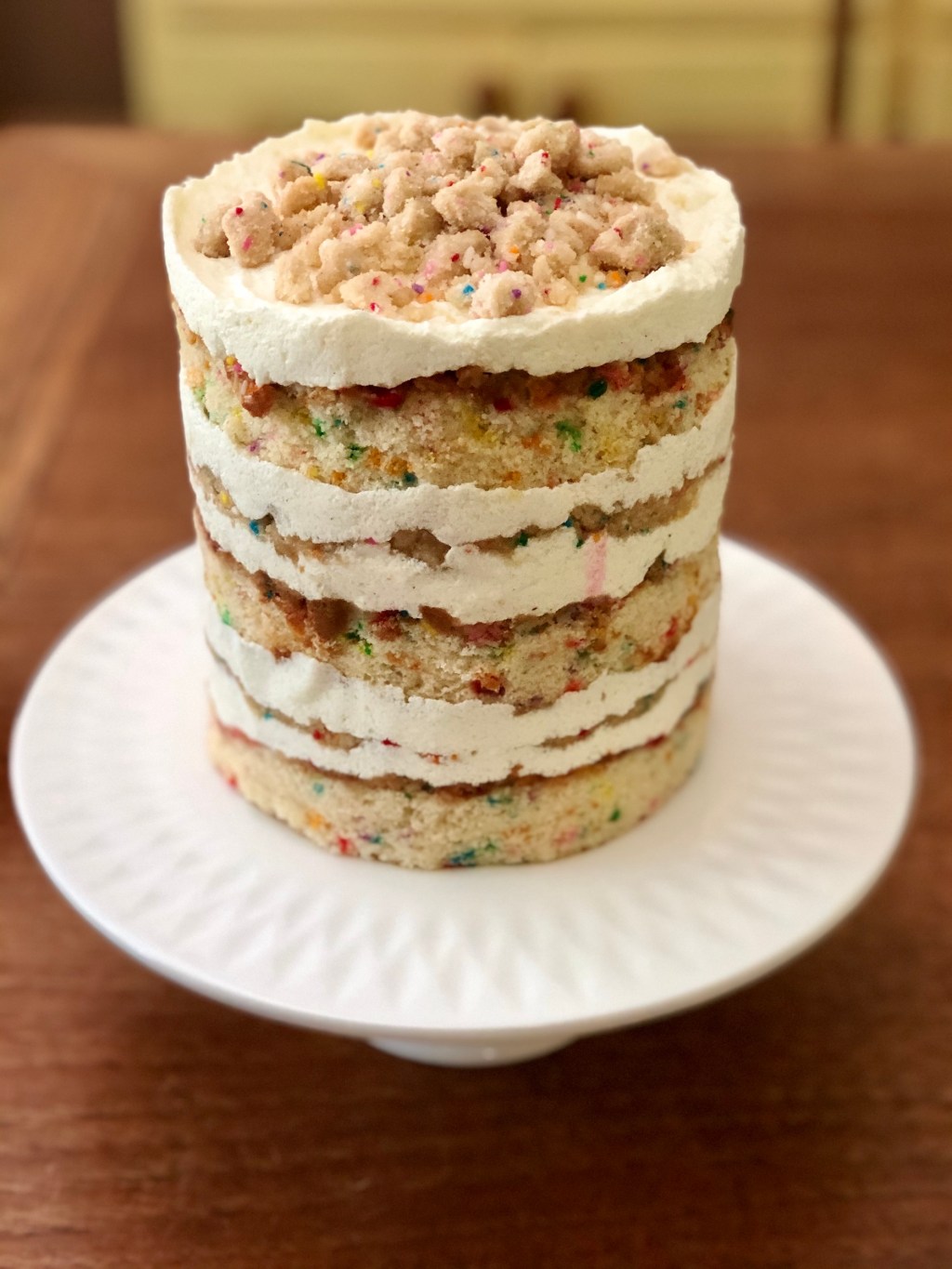
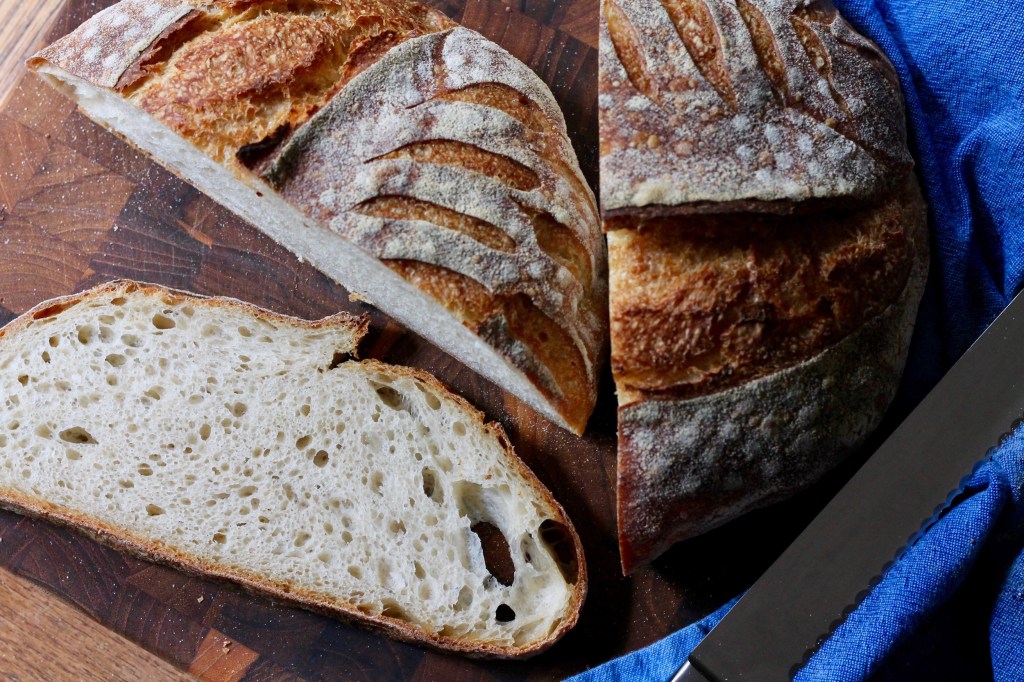
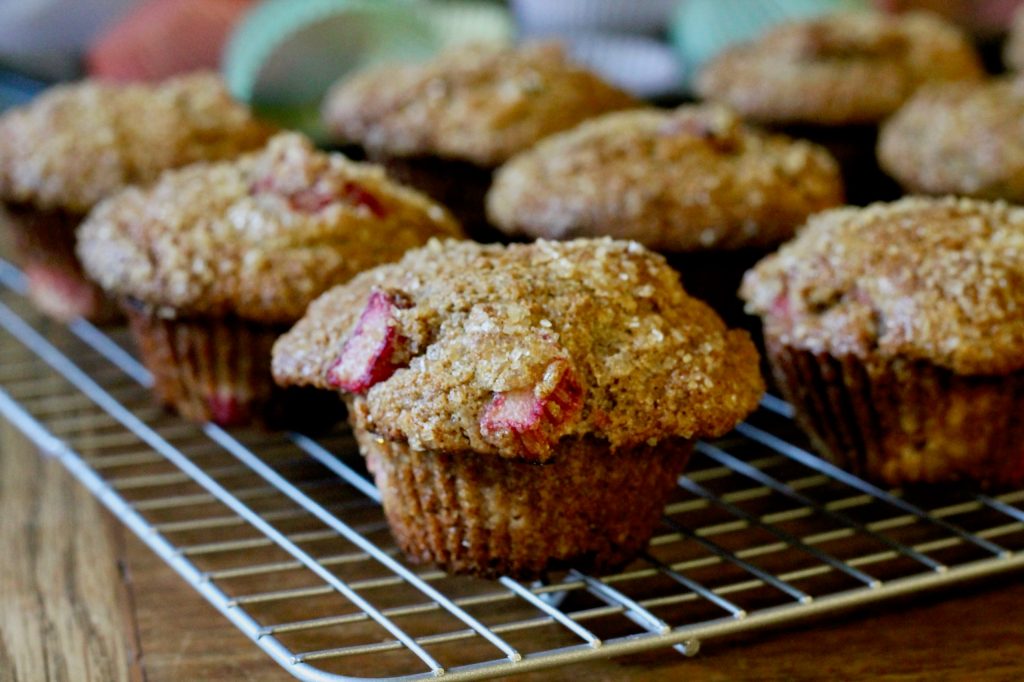
Leave a comment